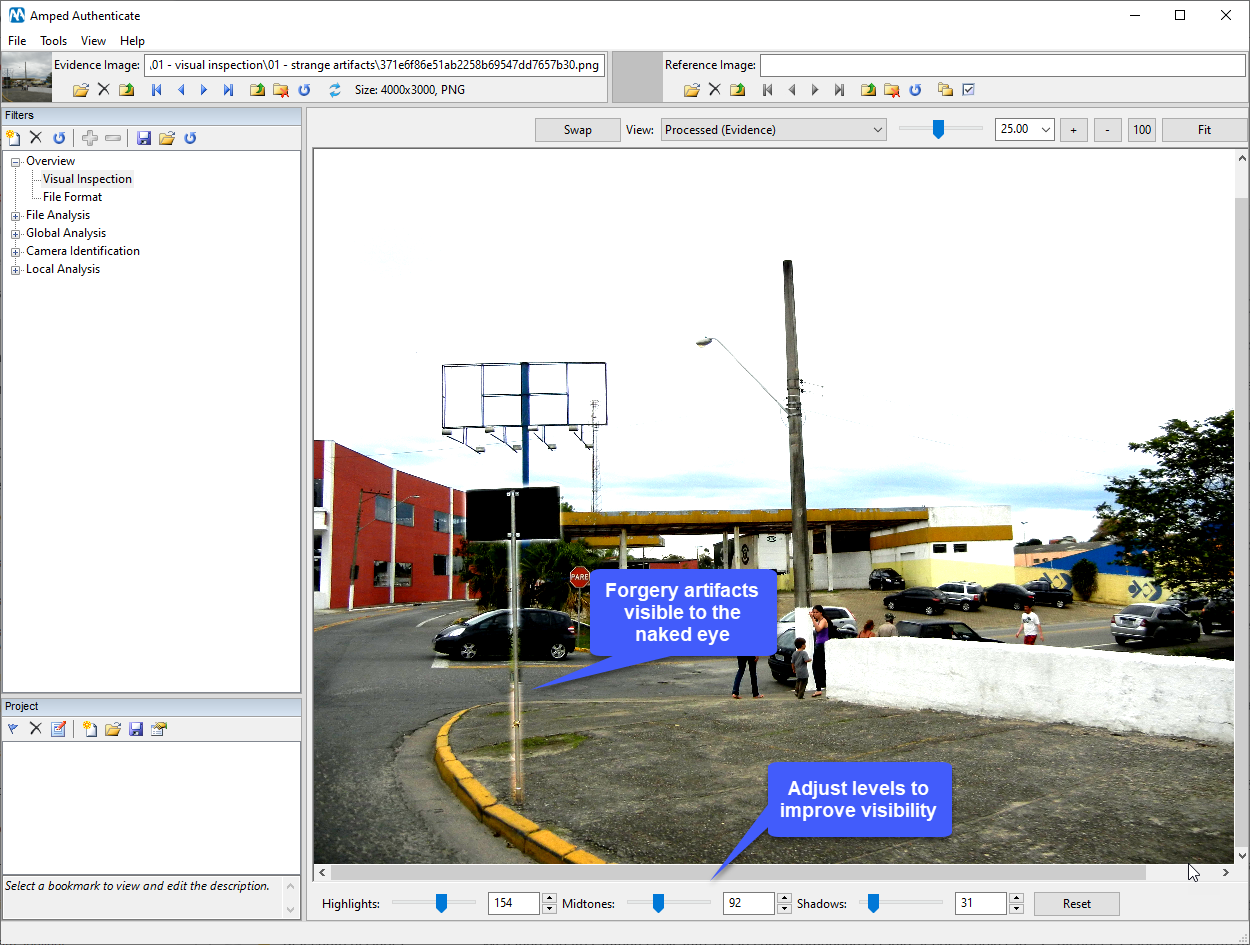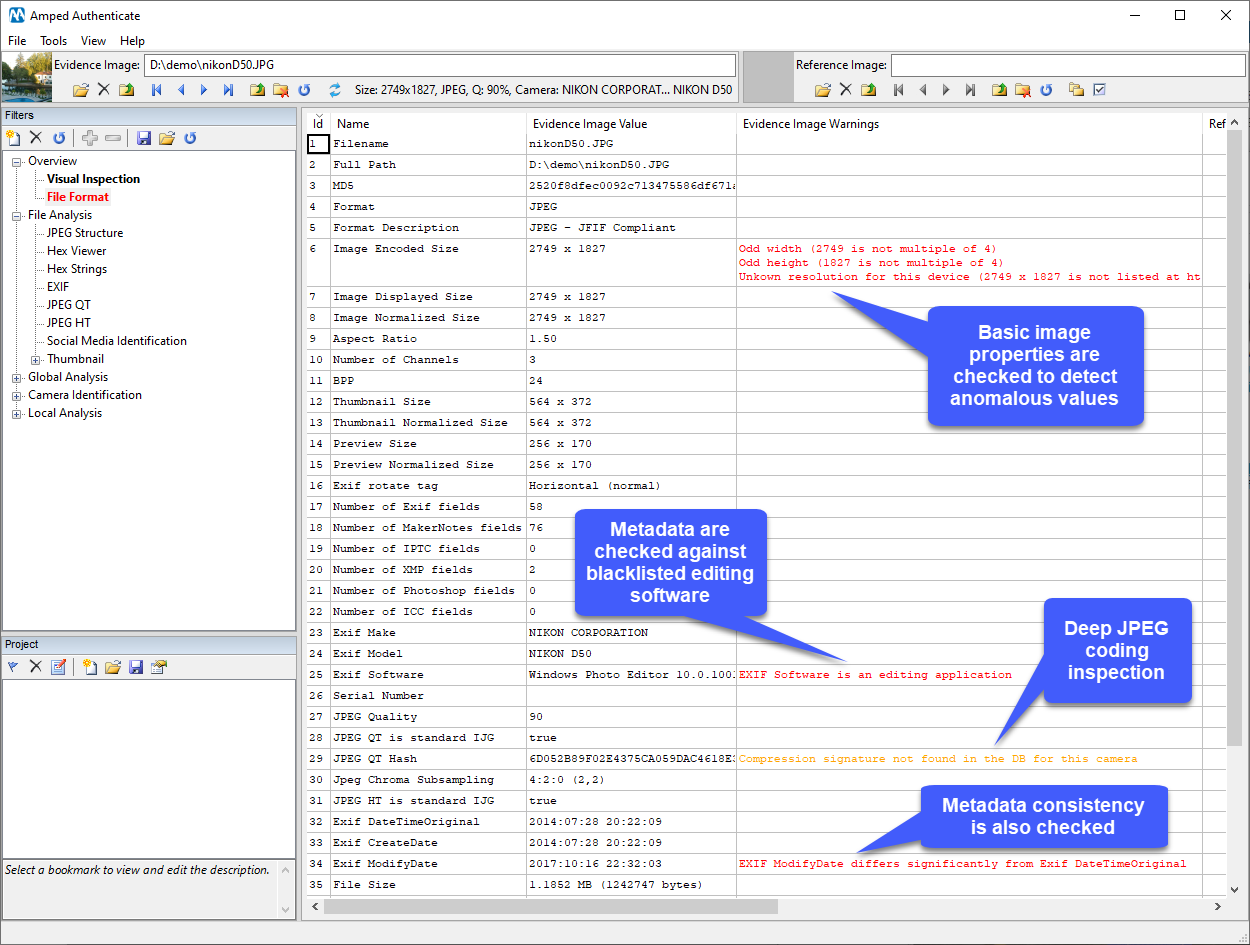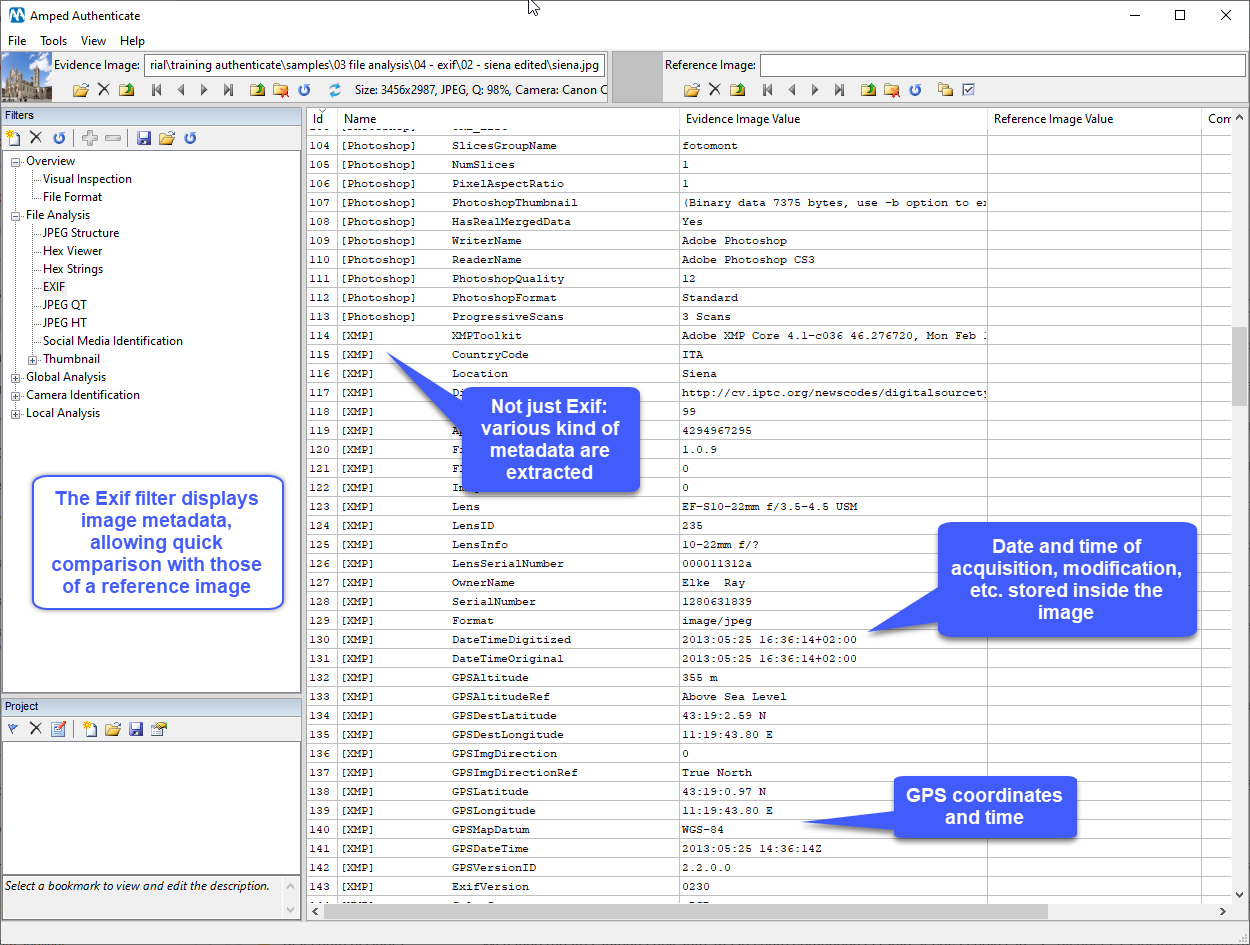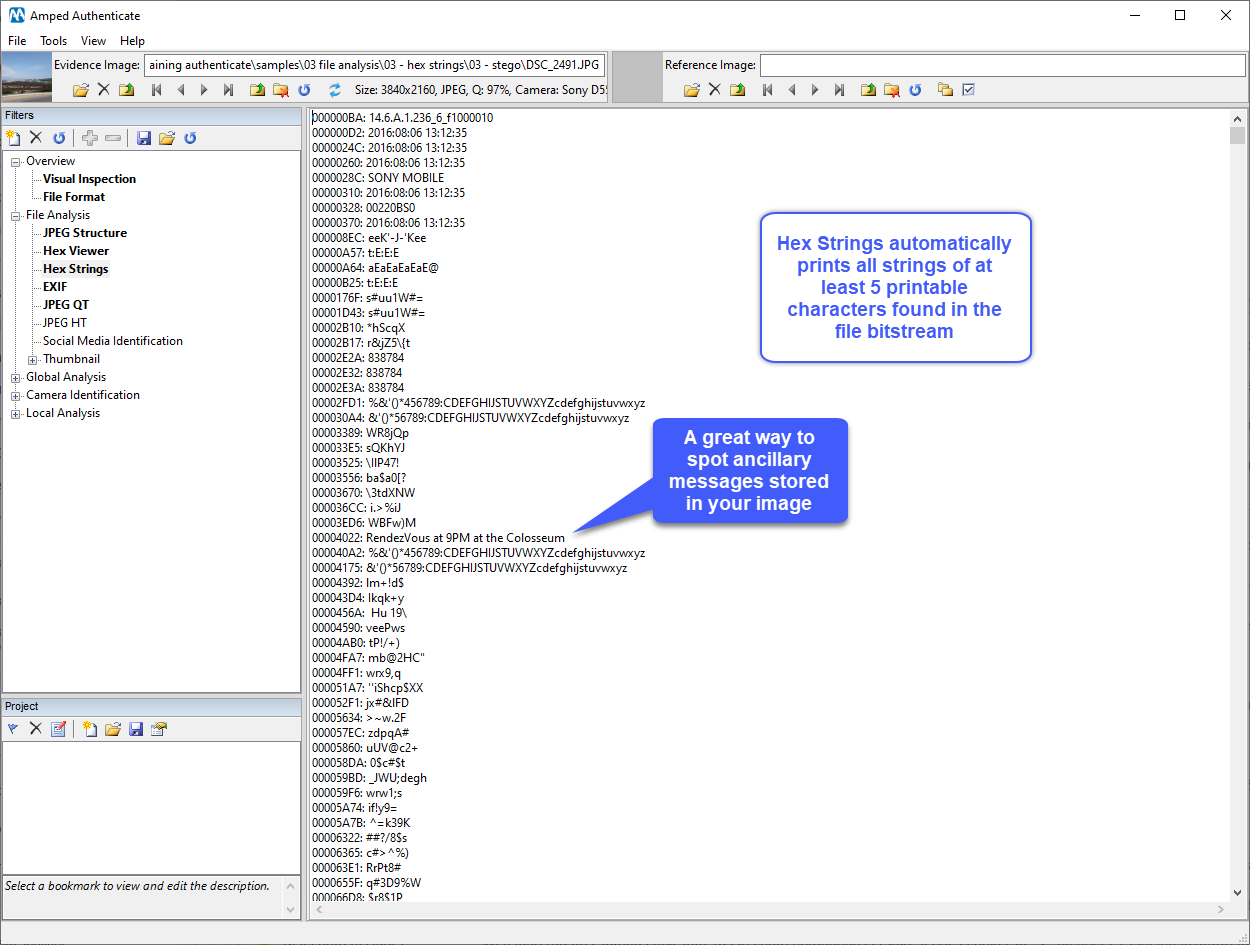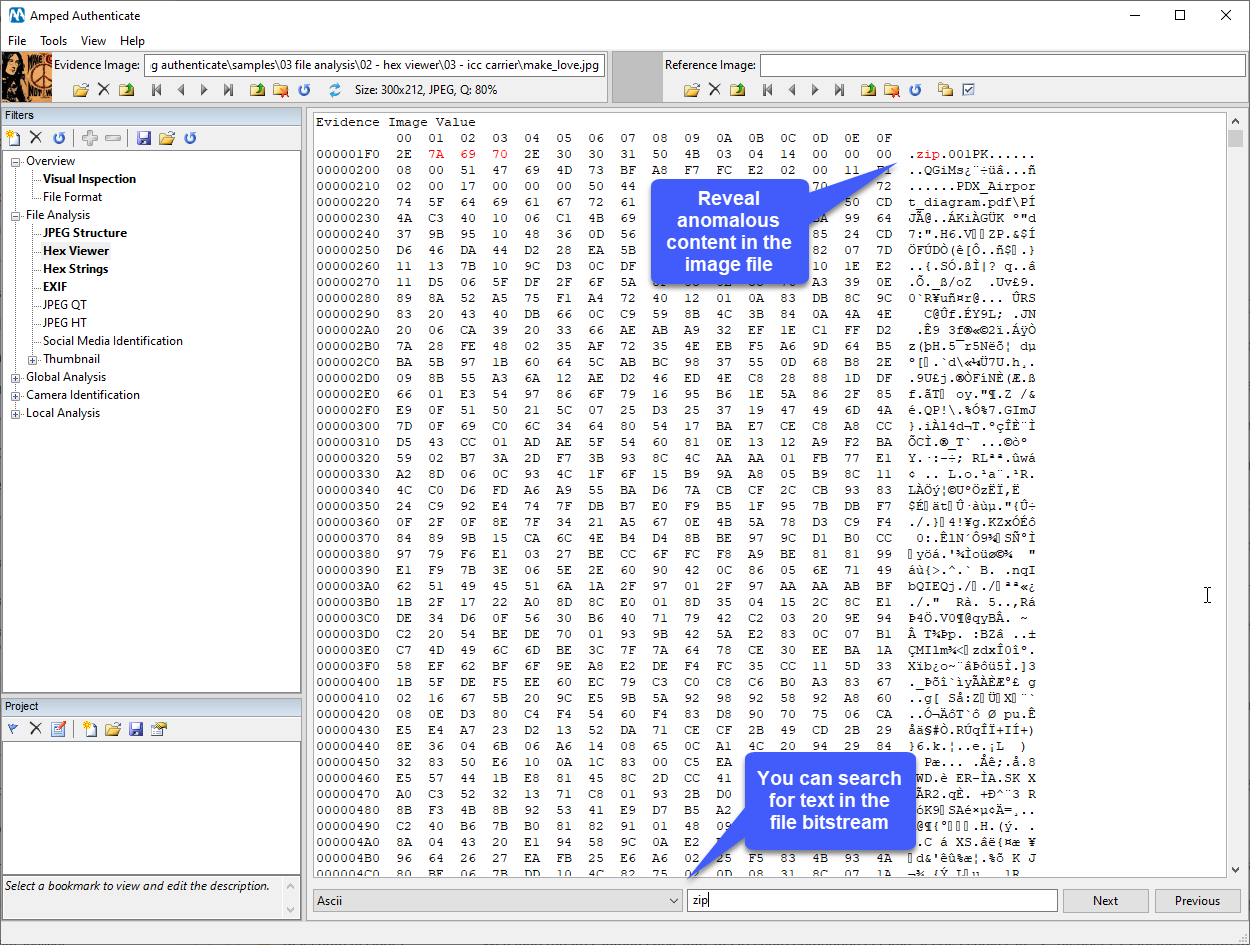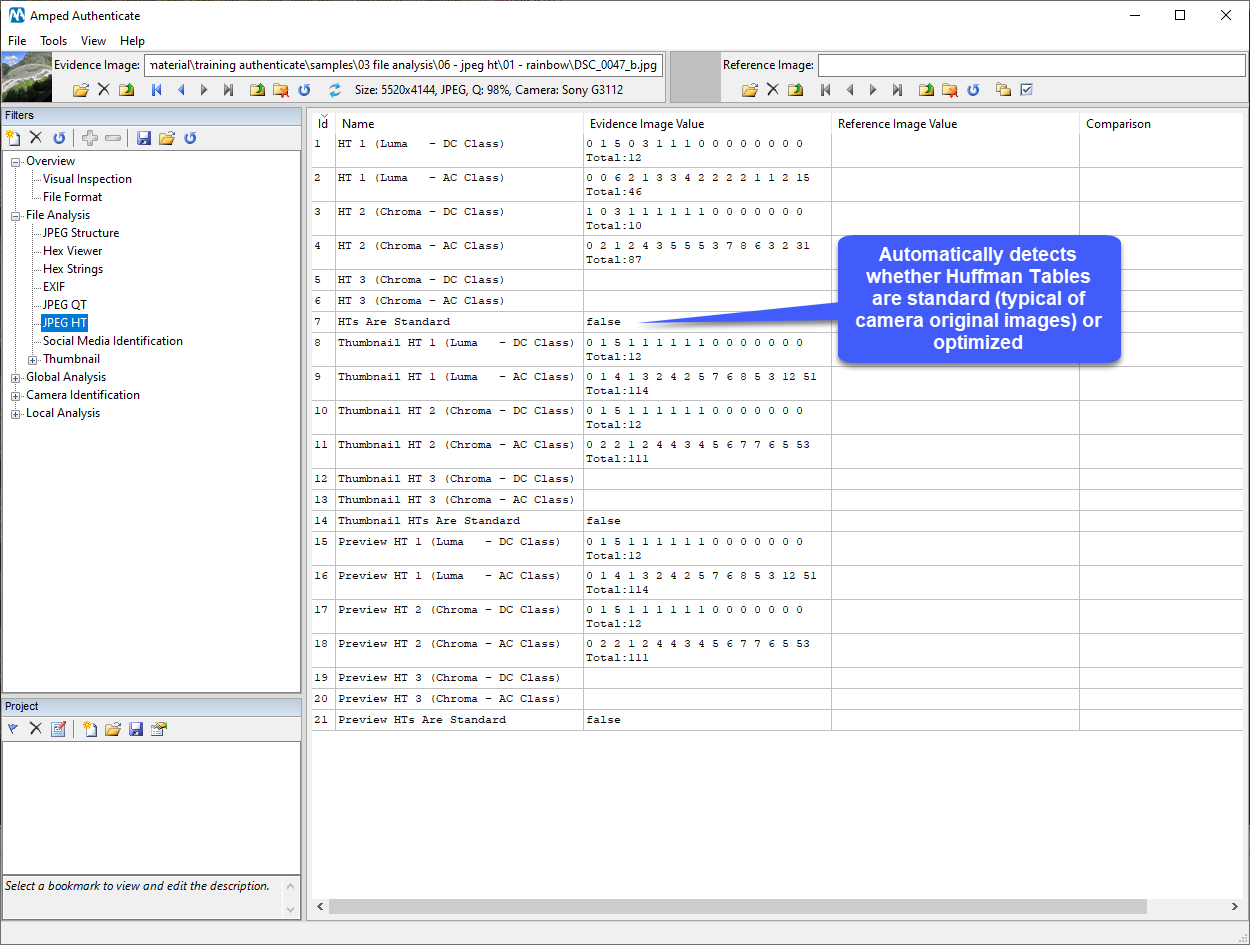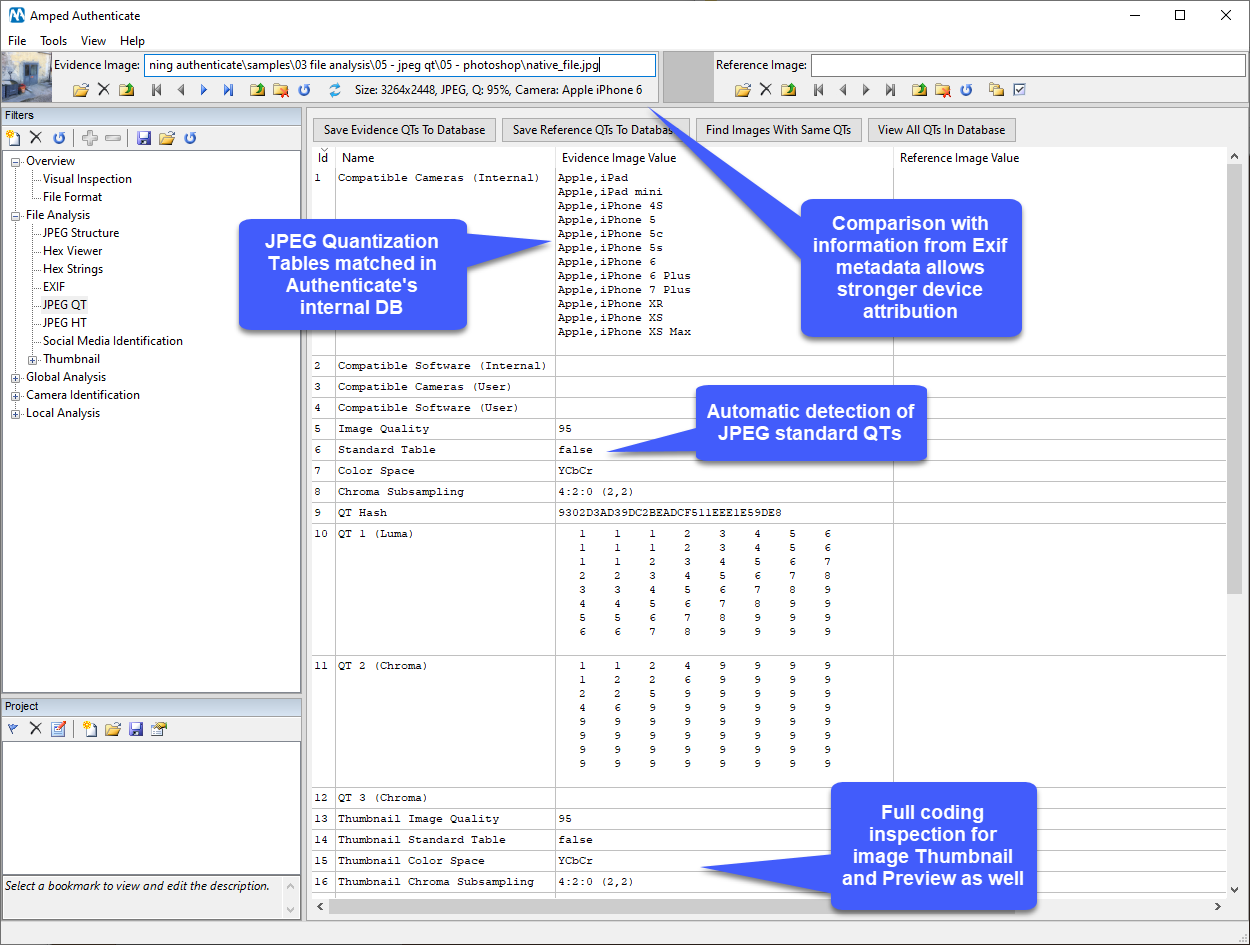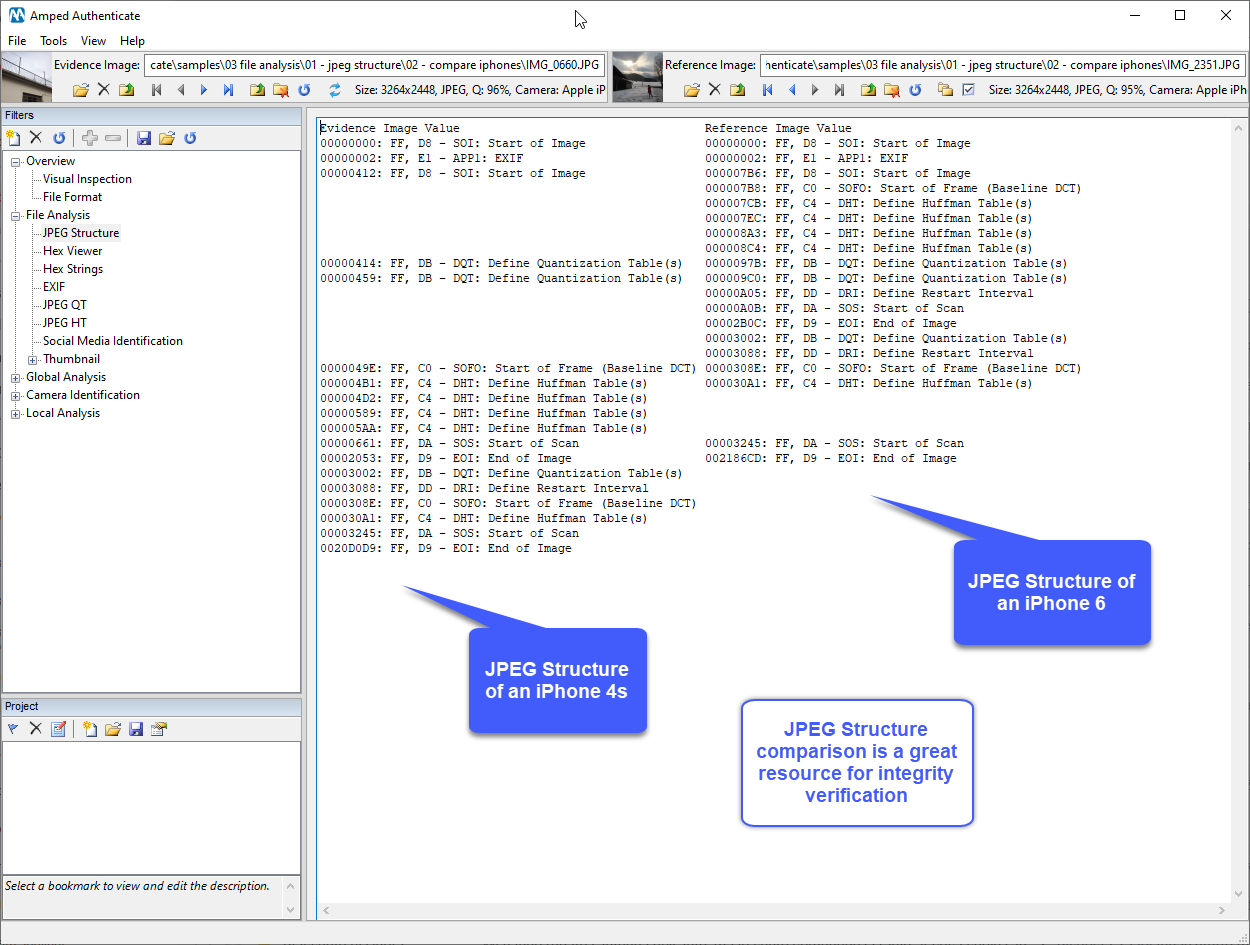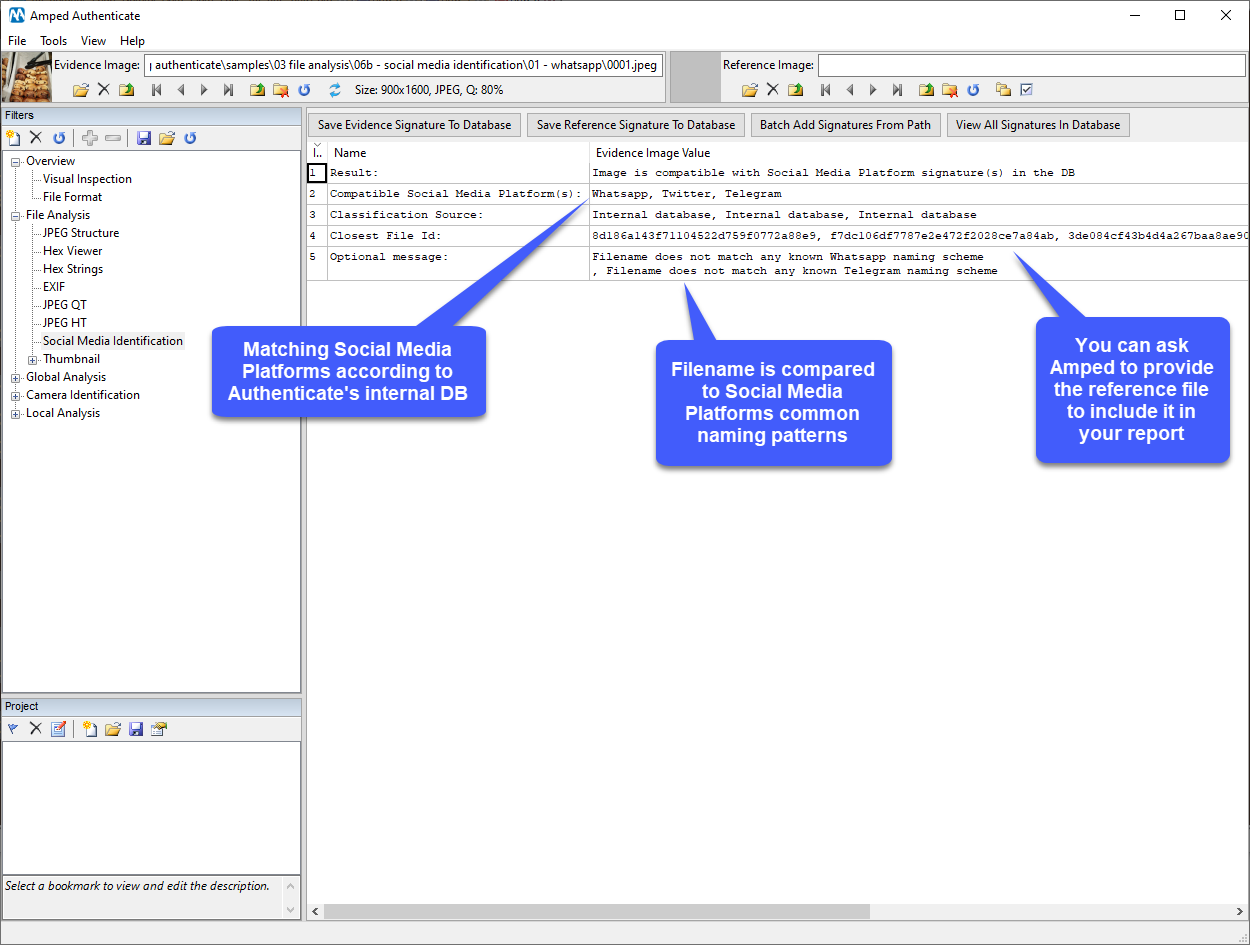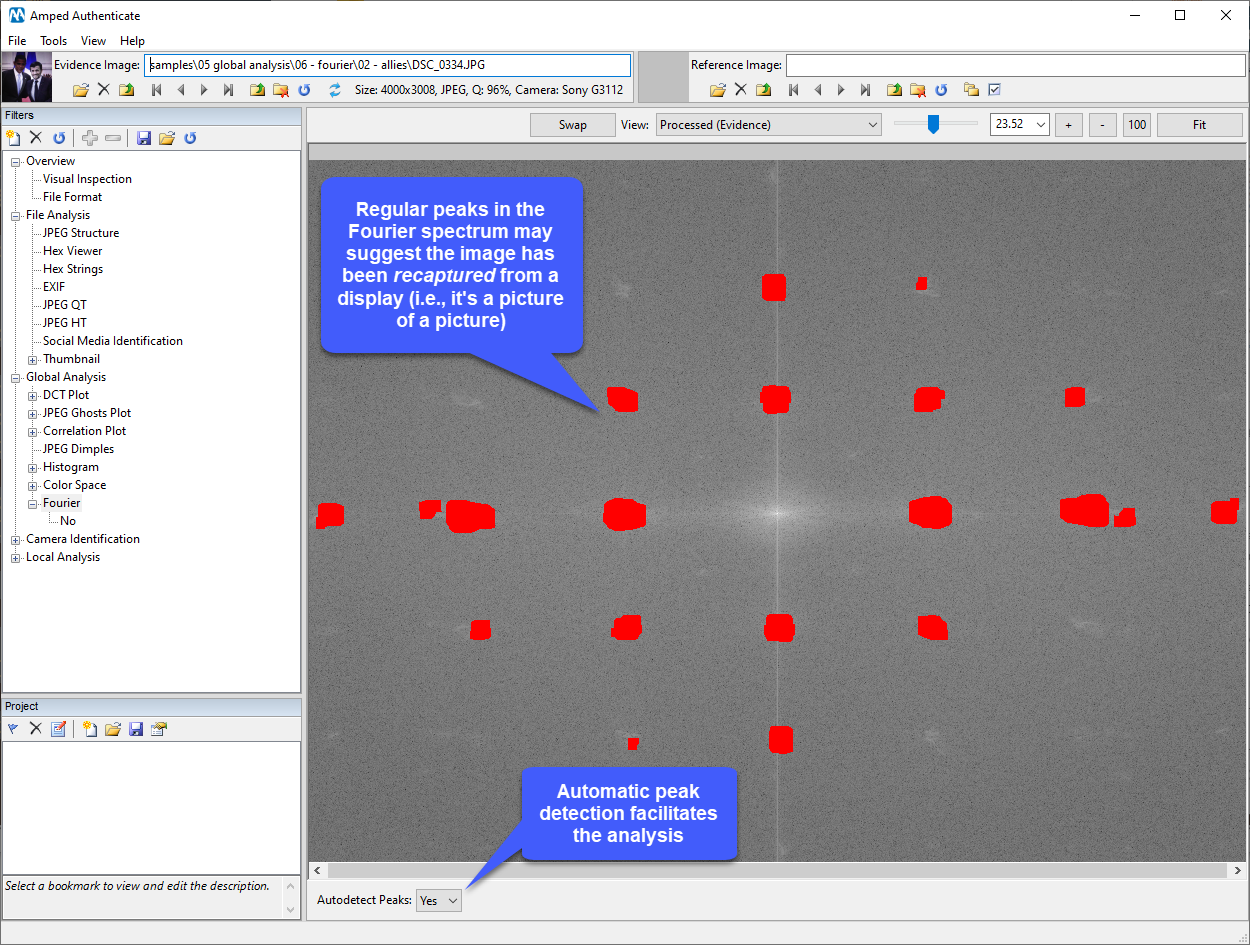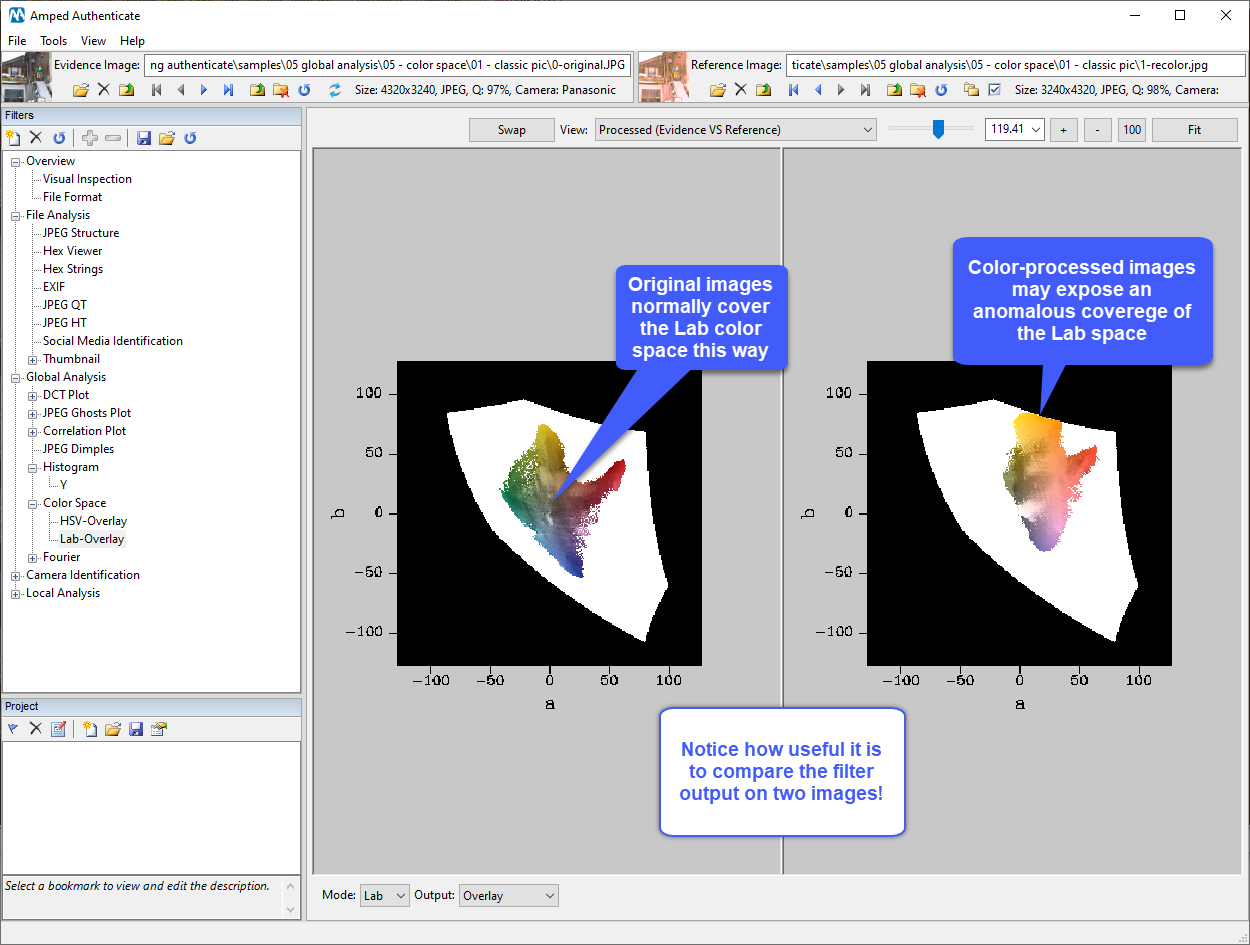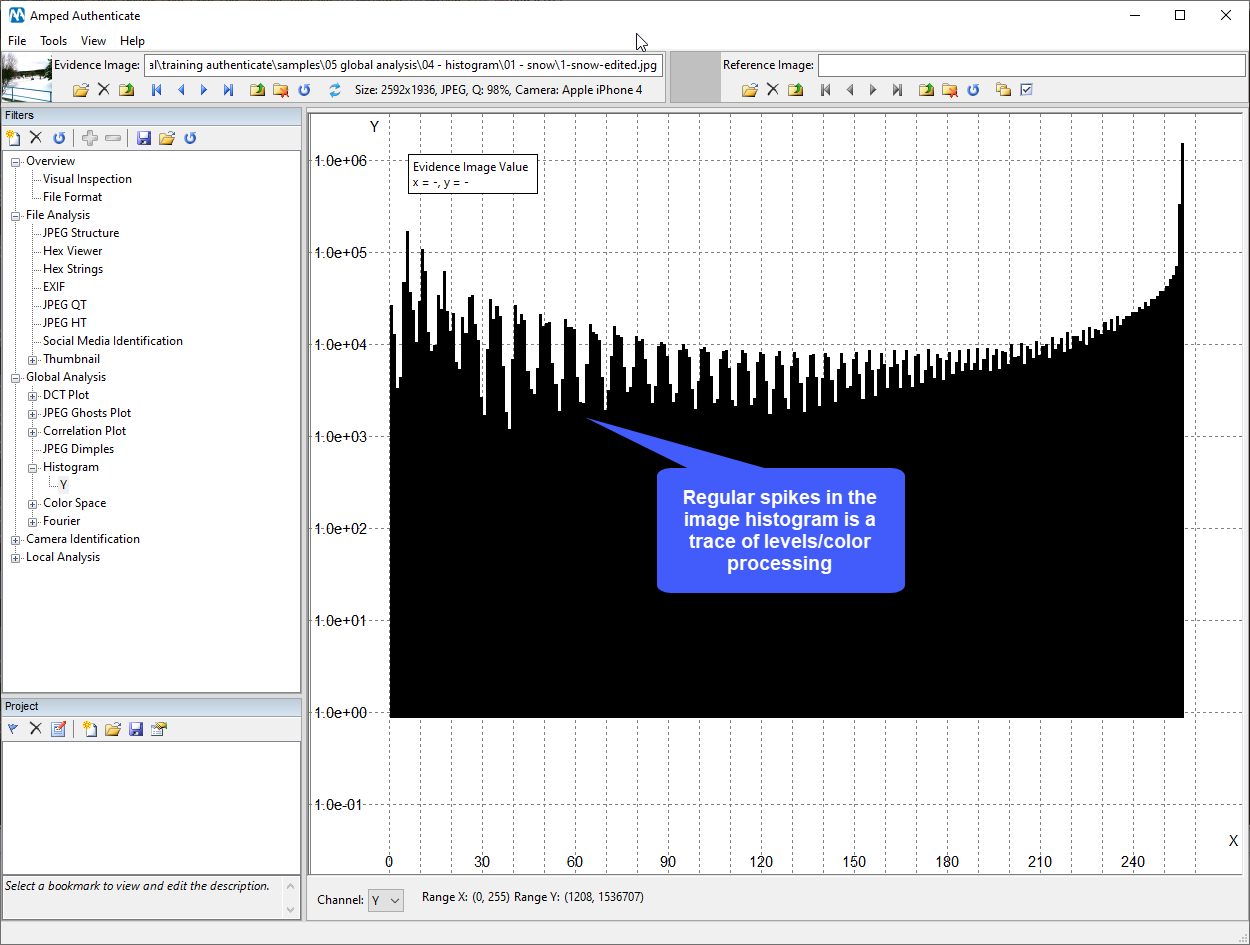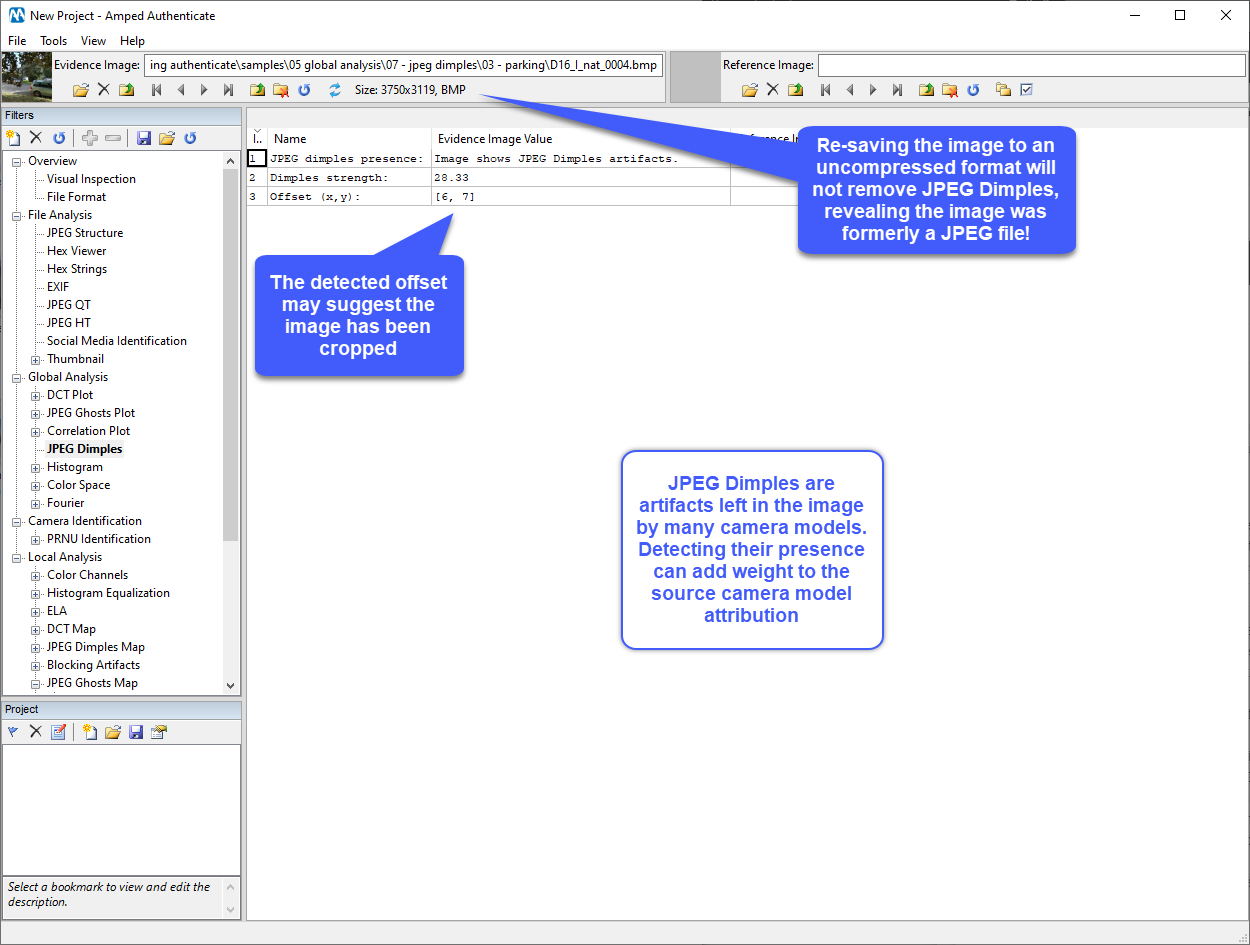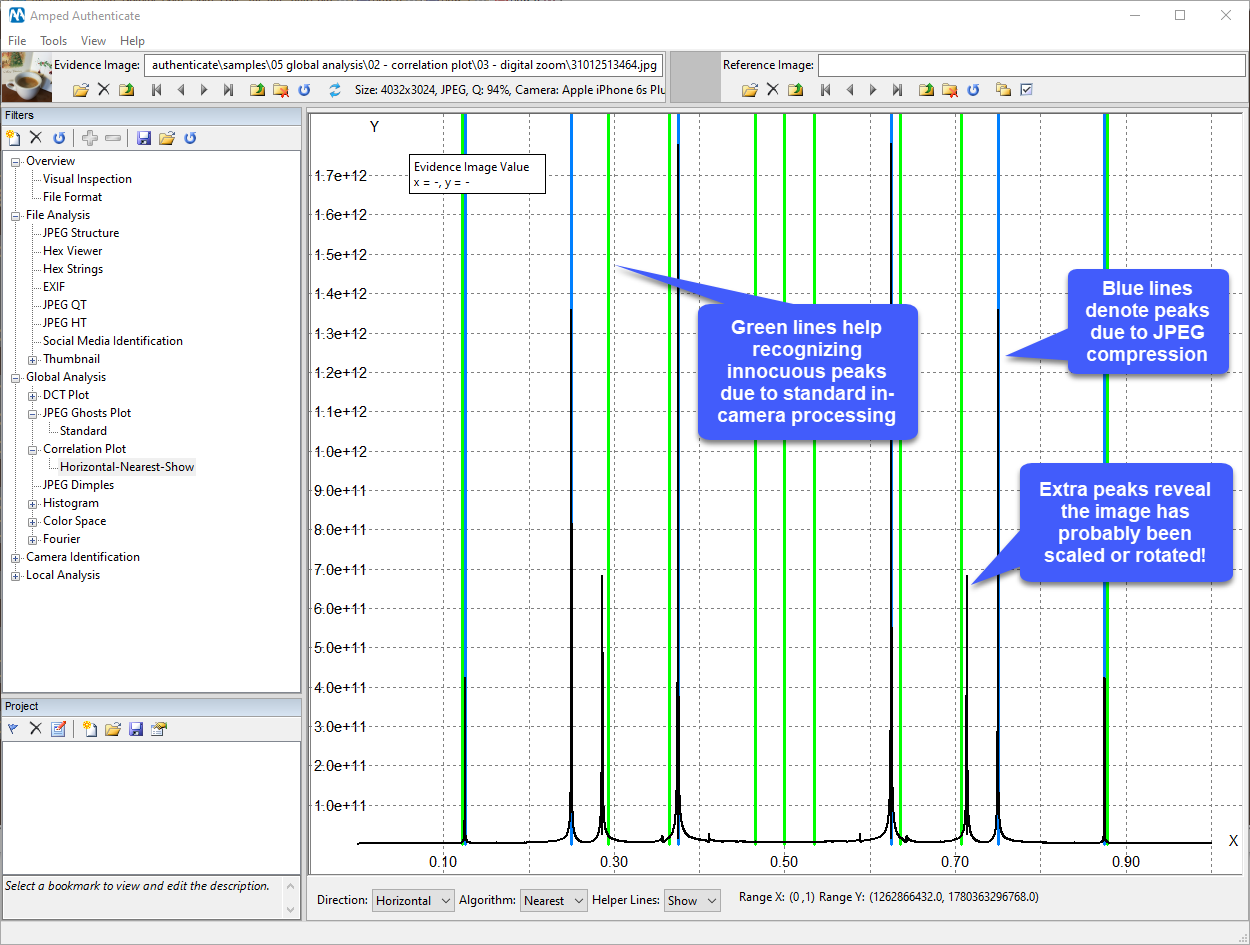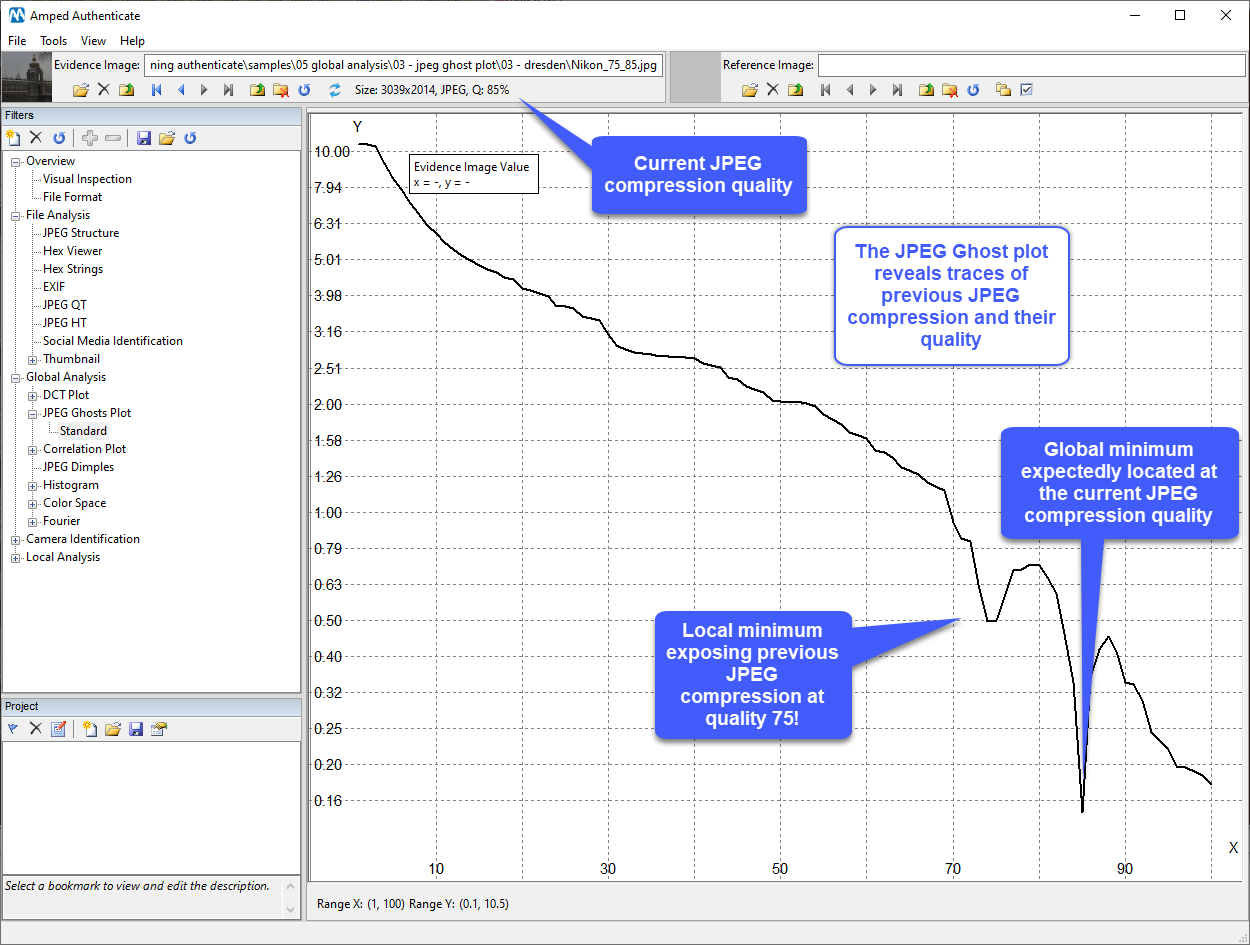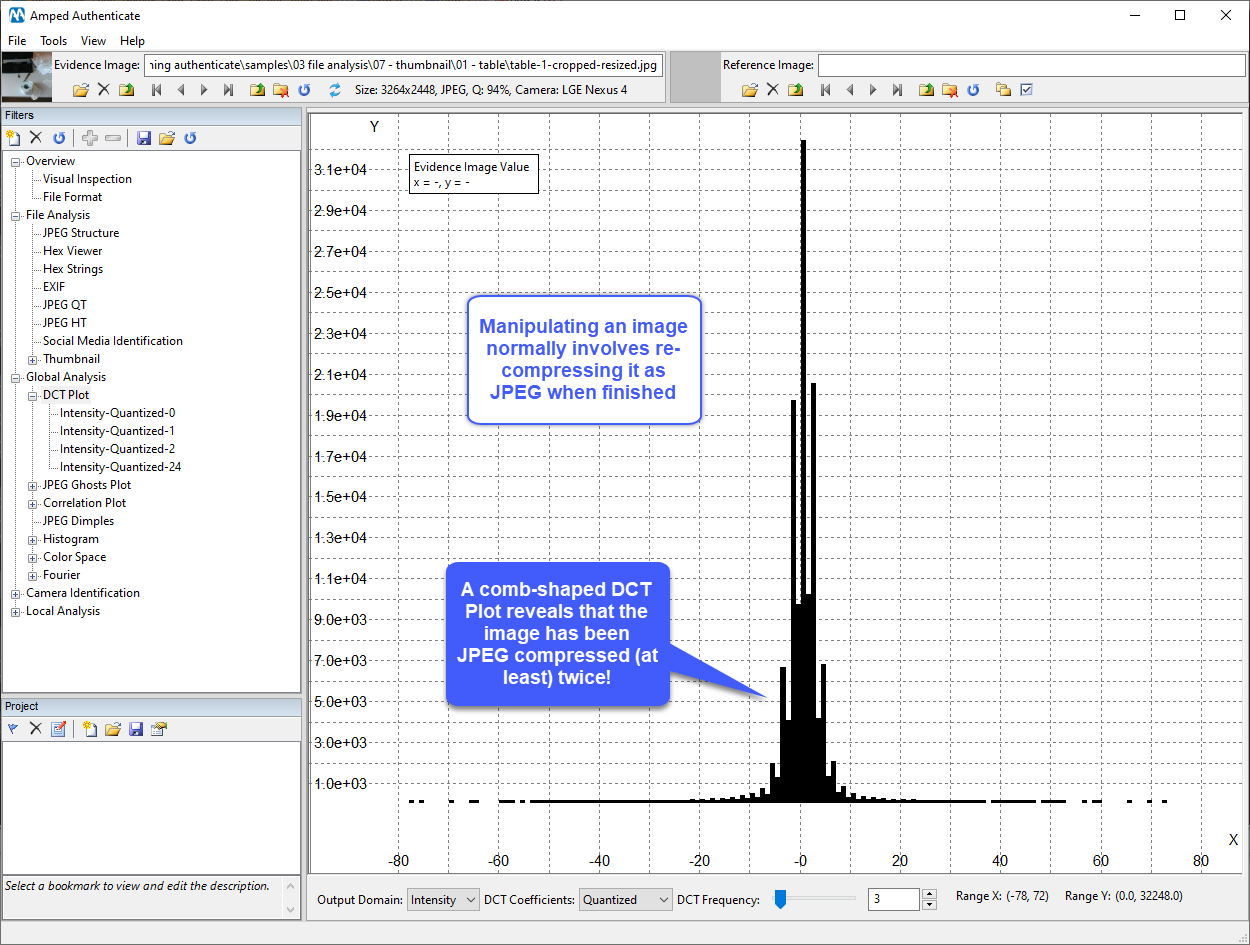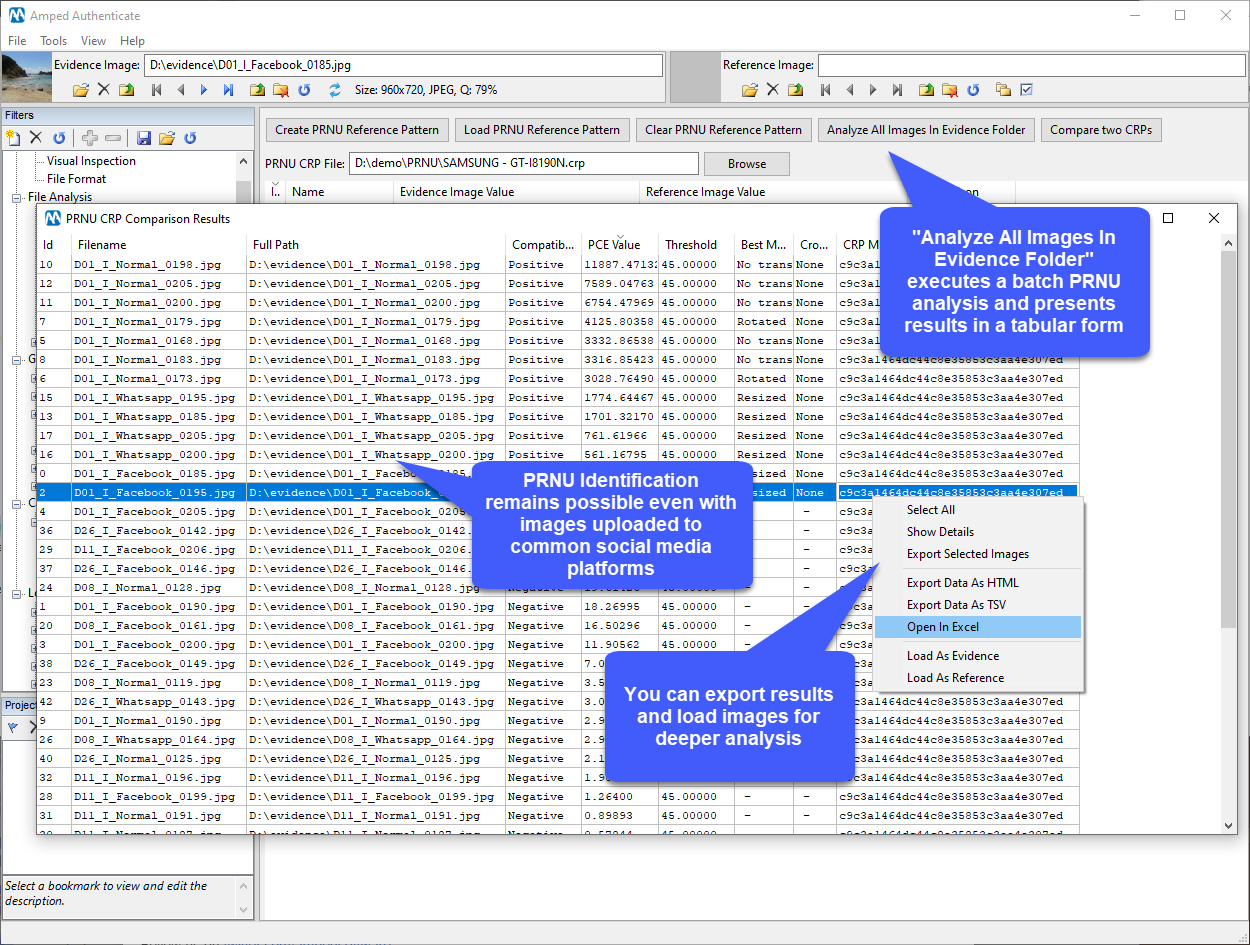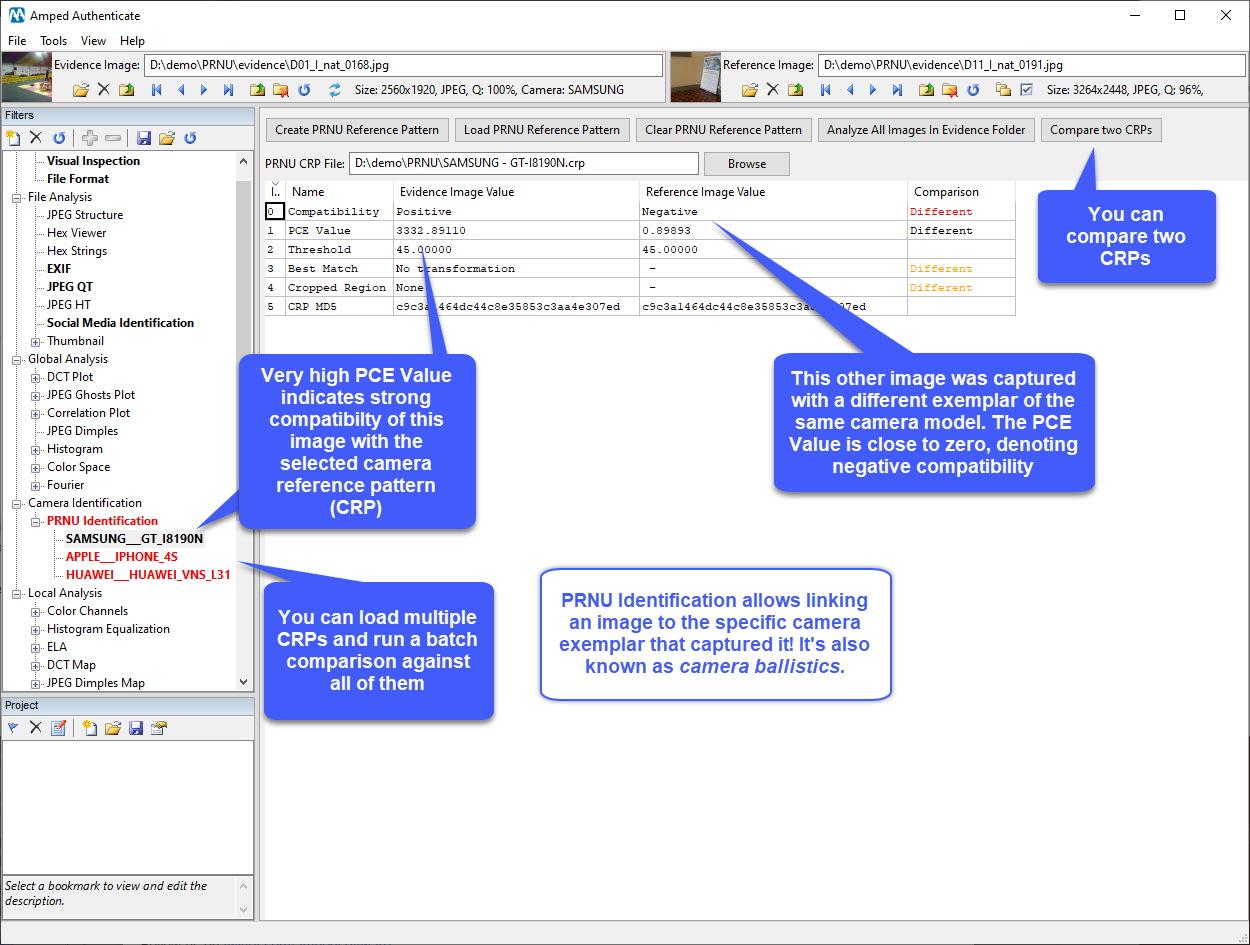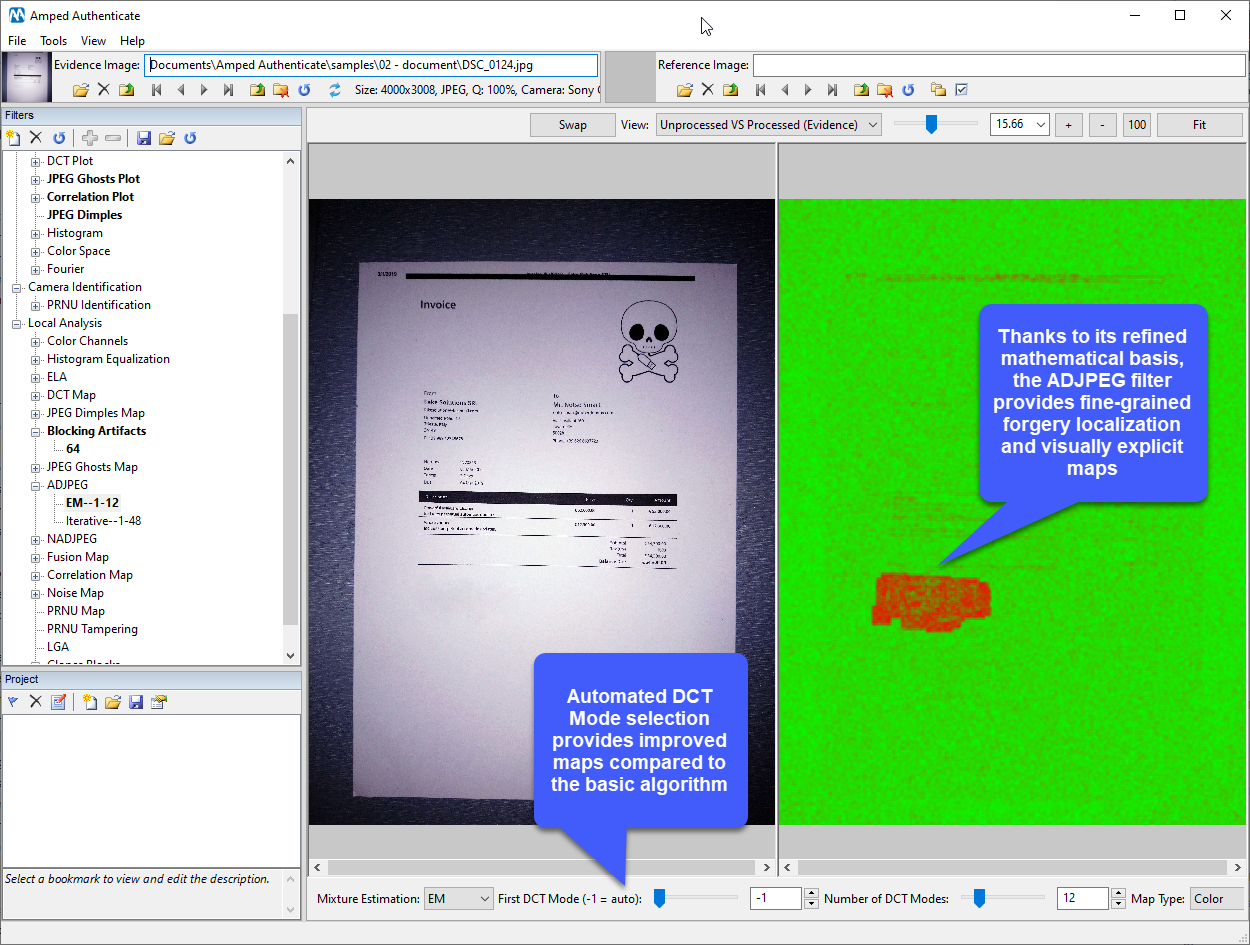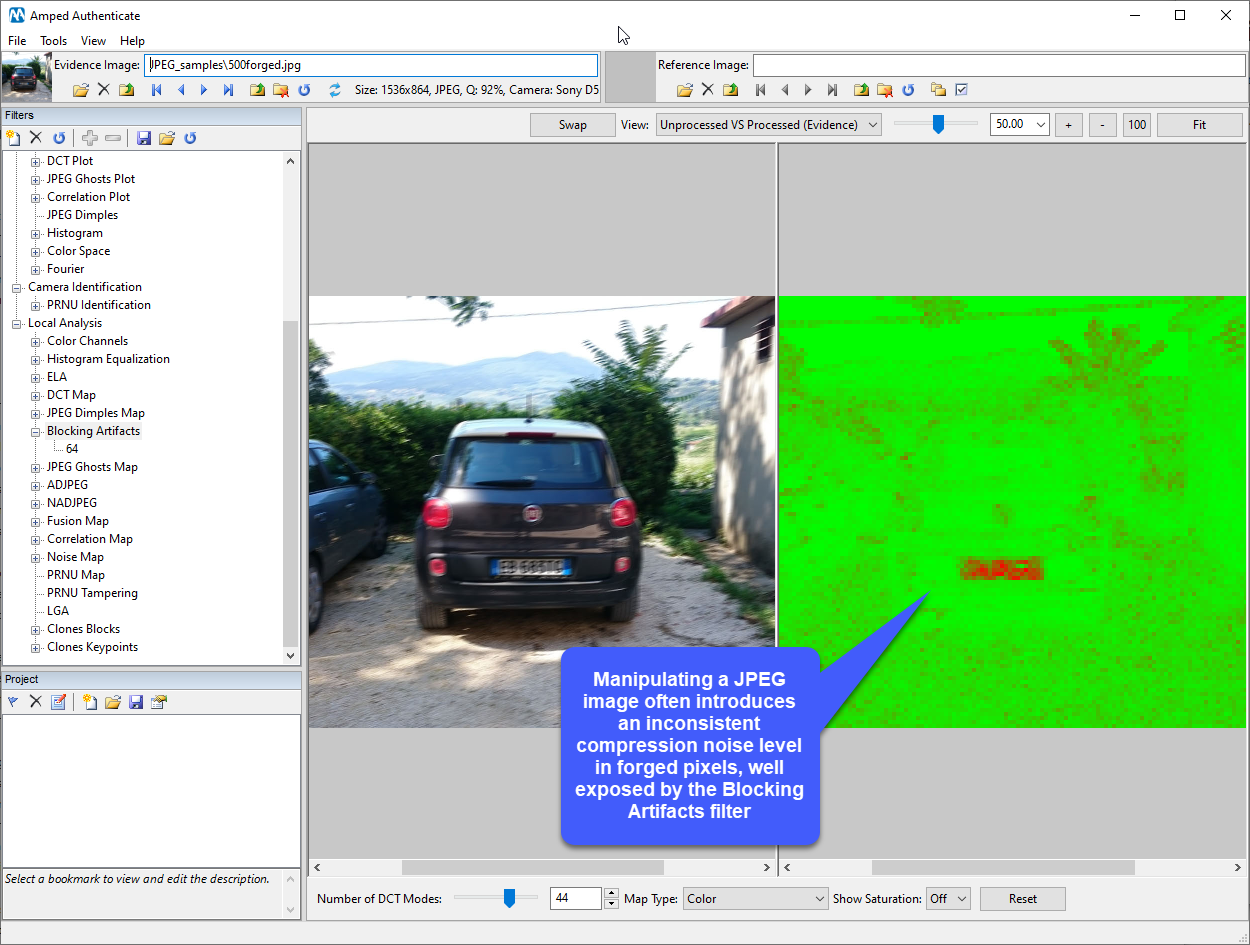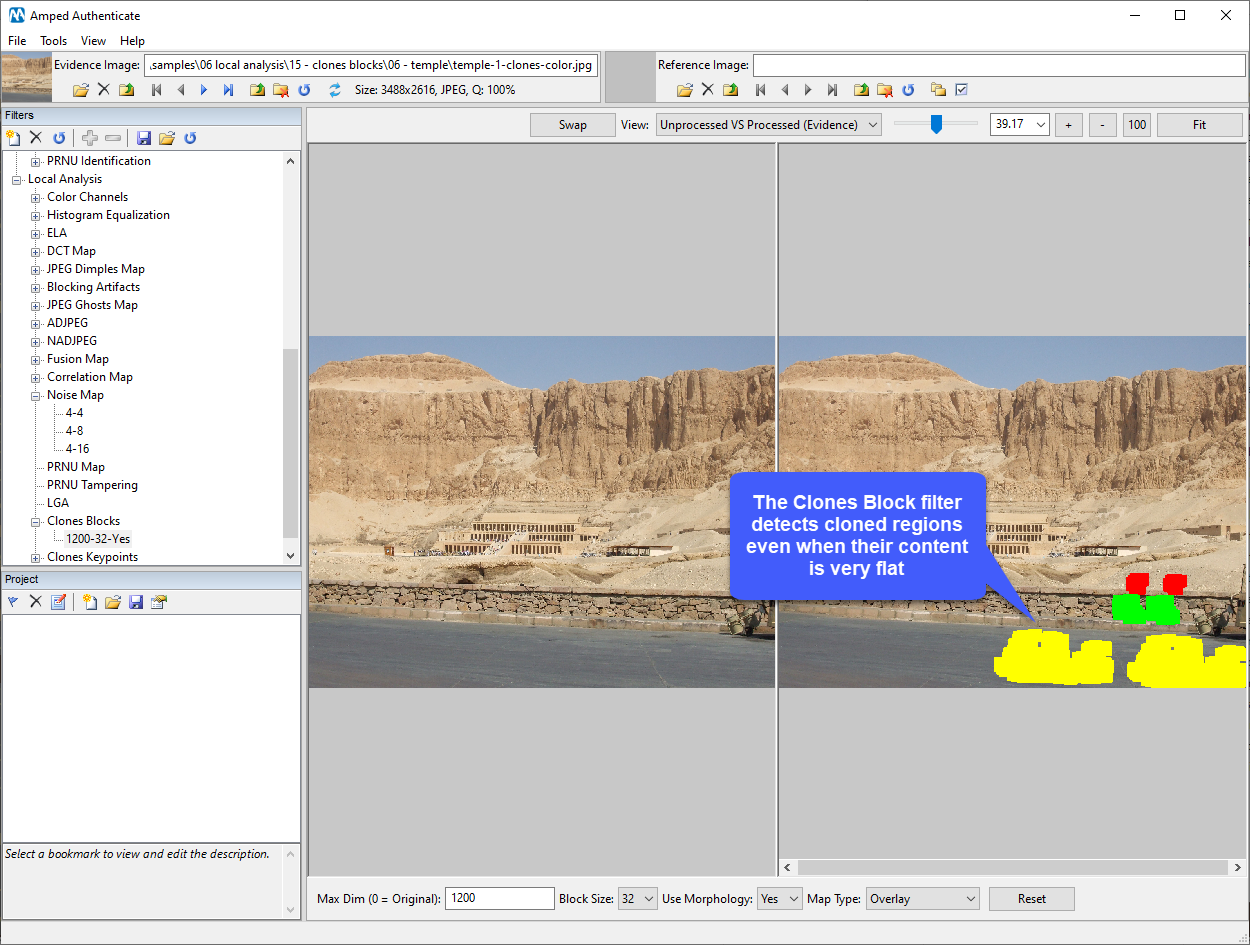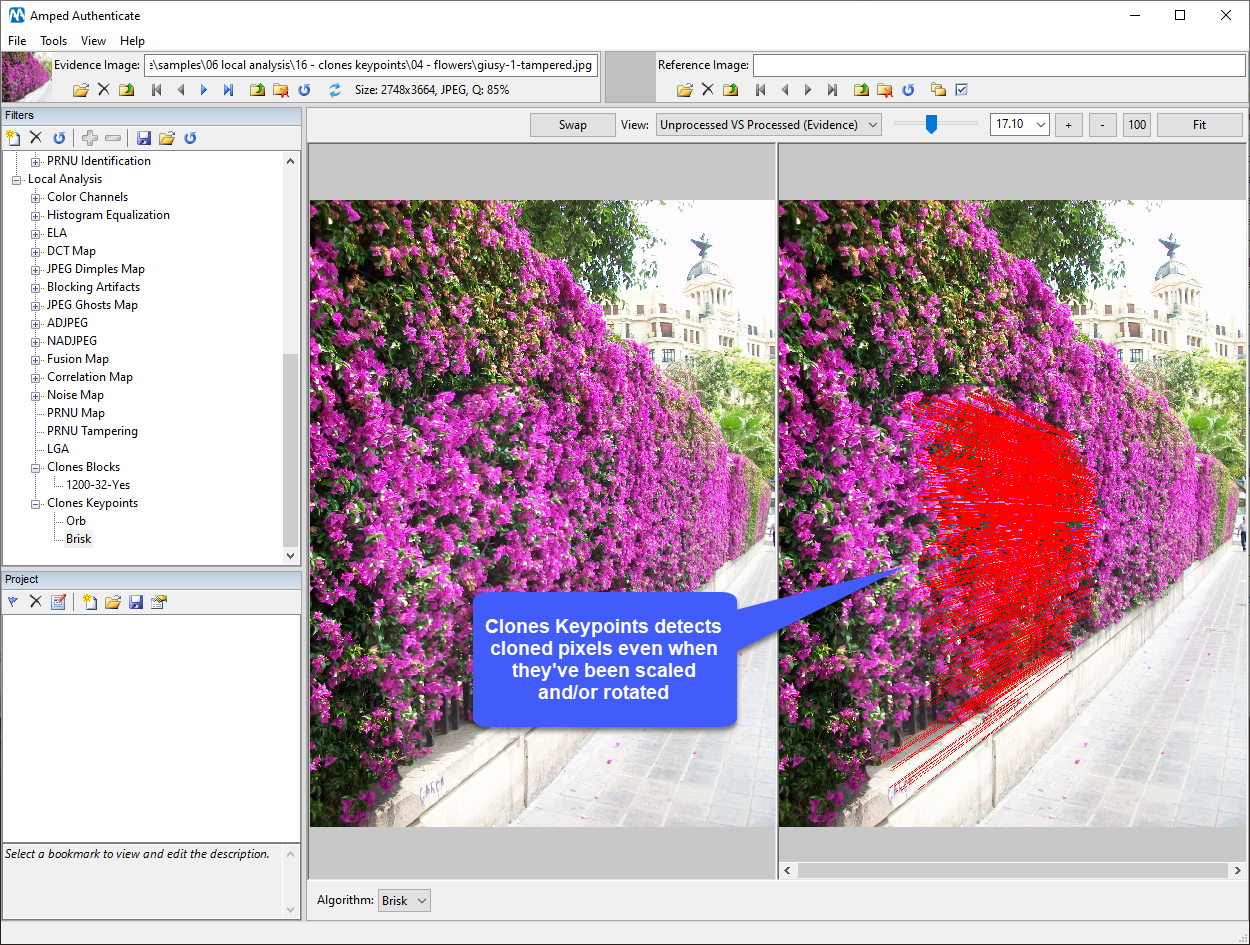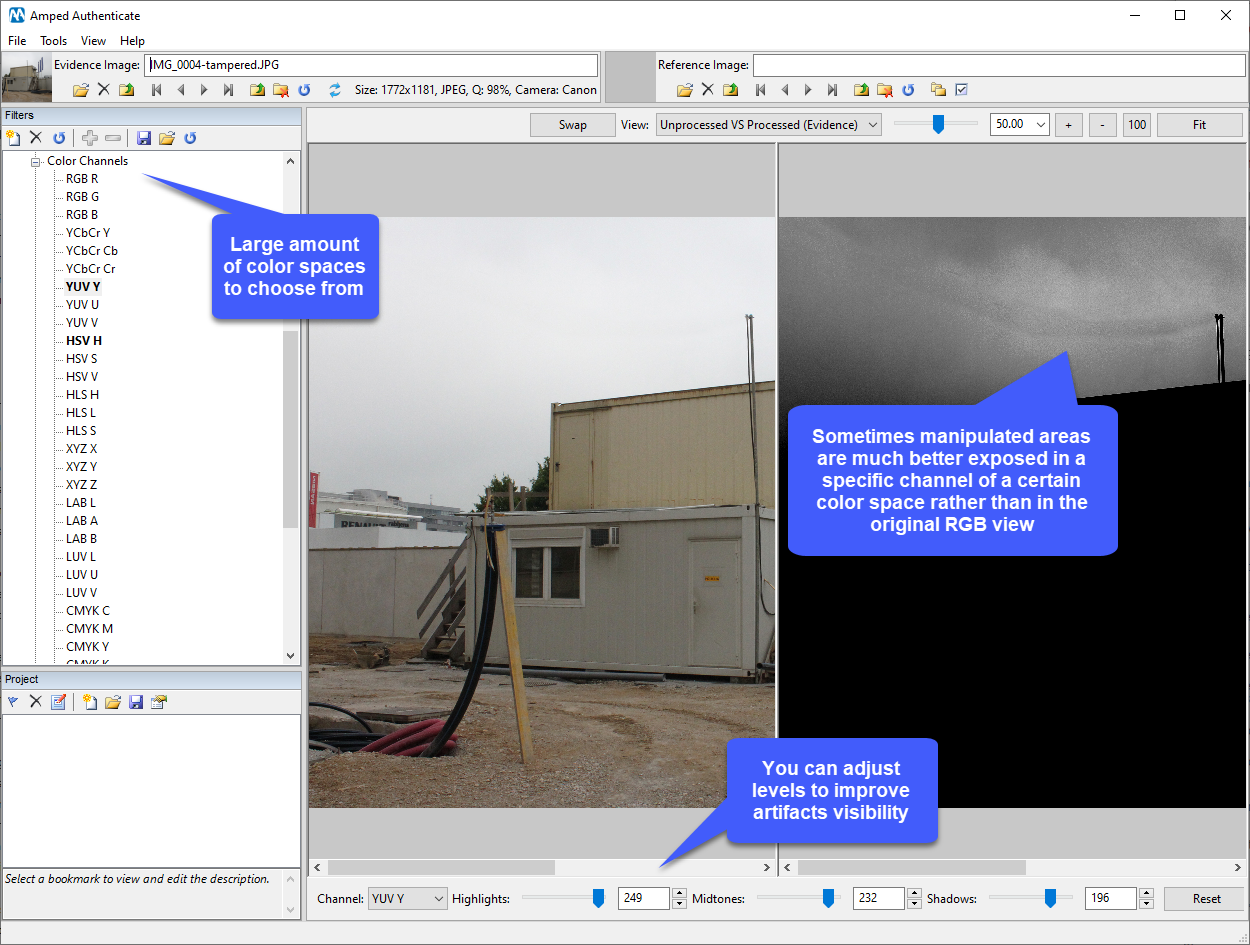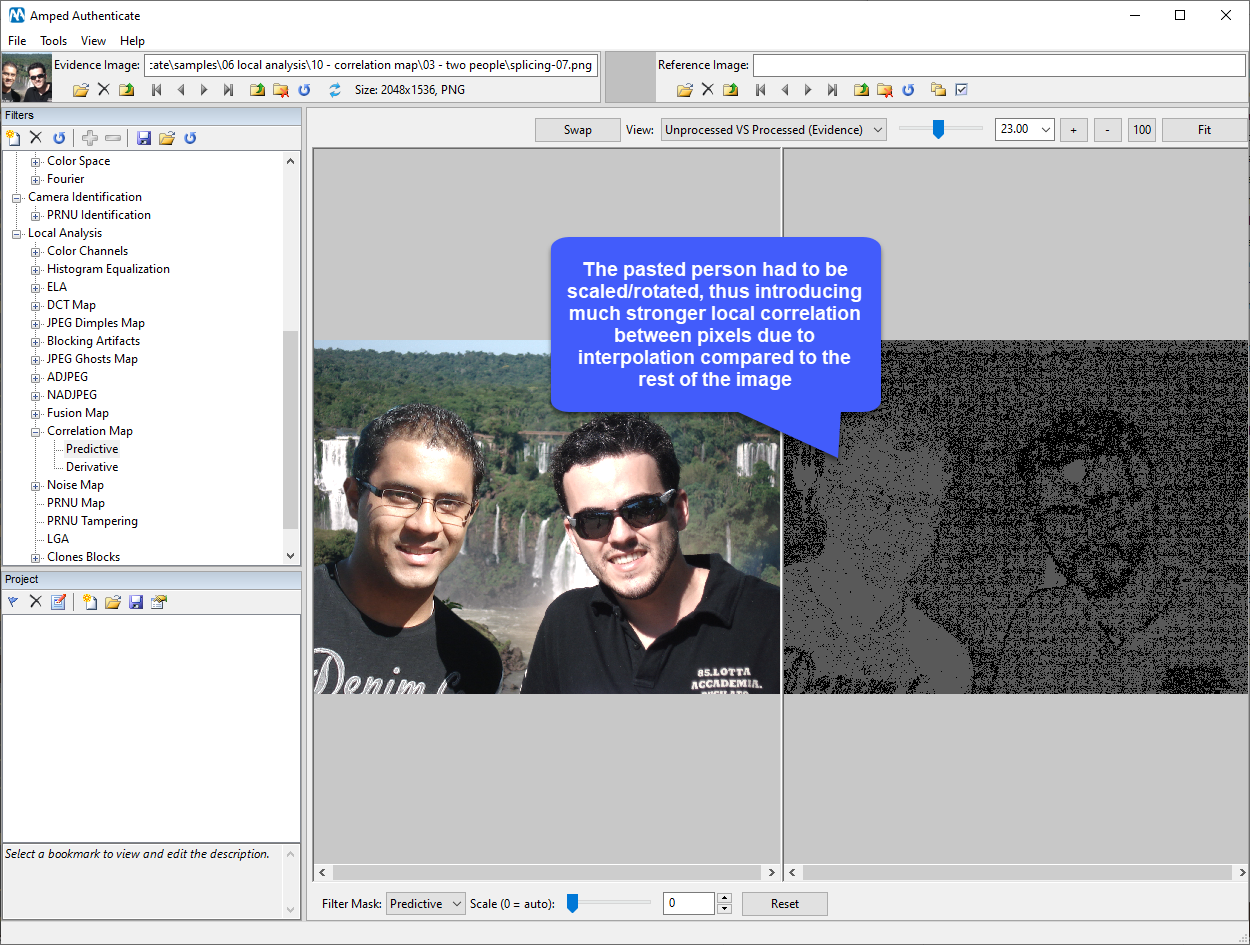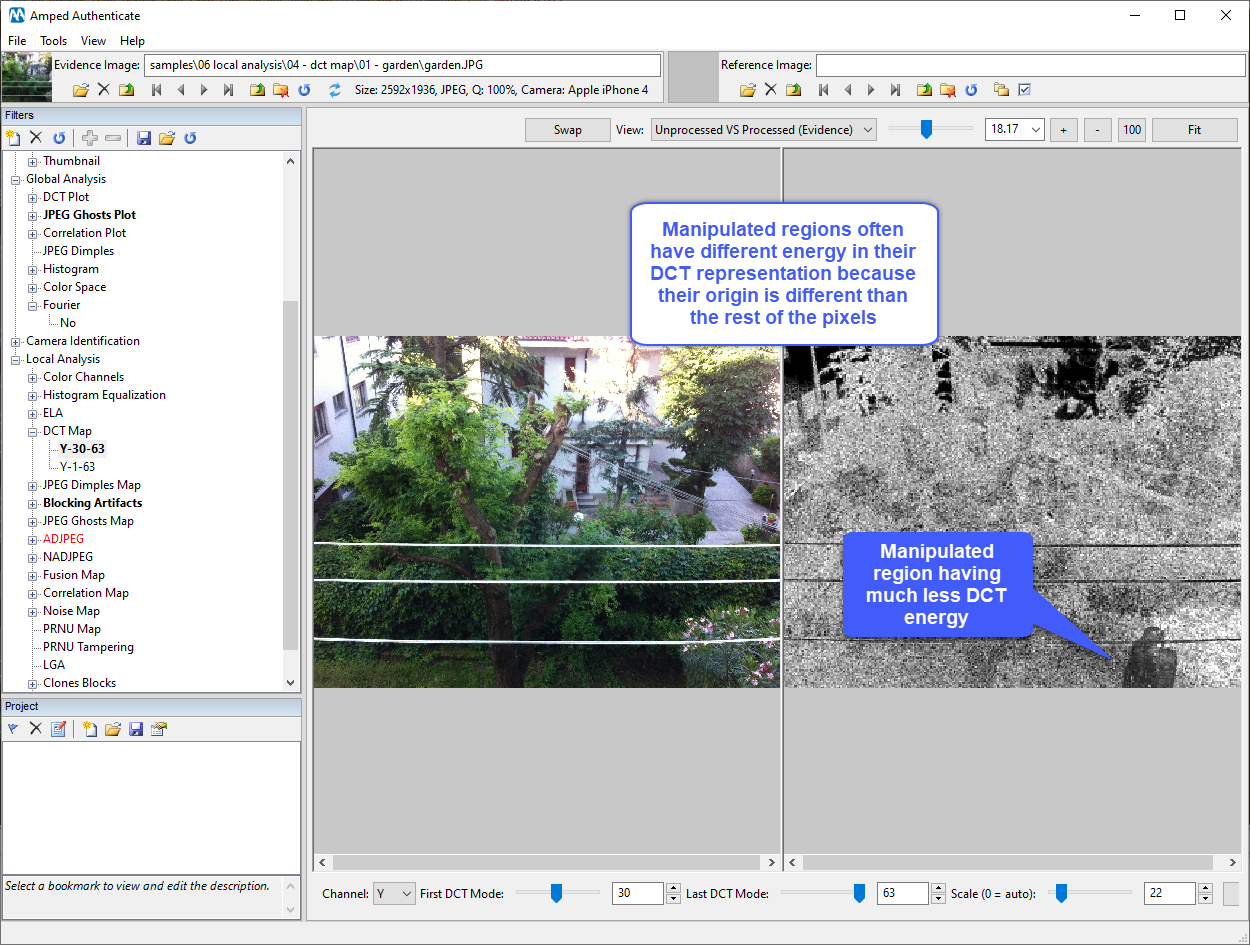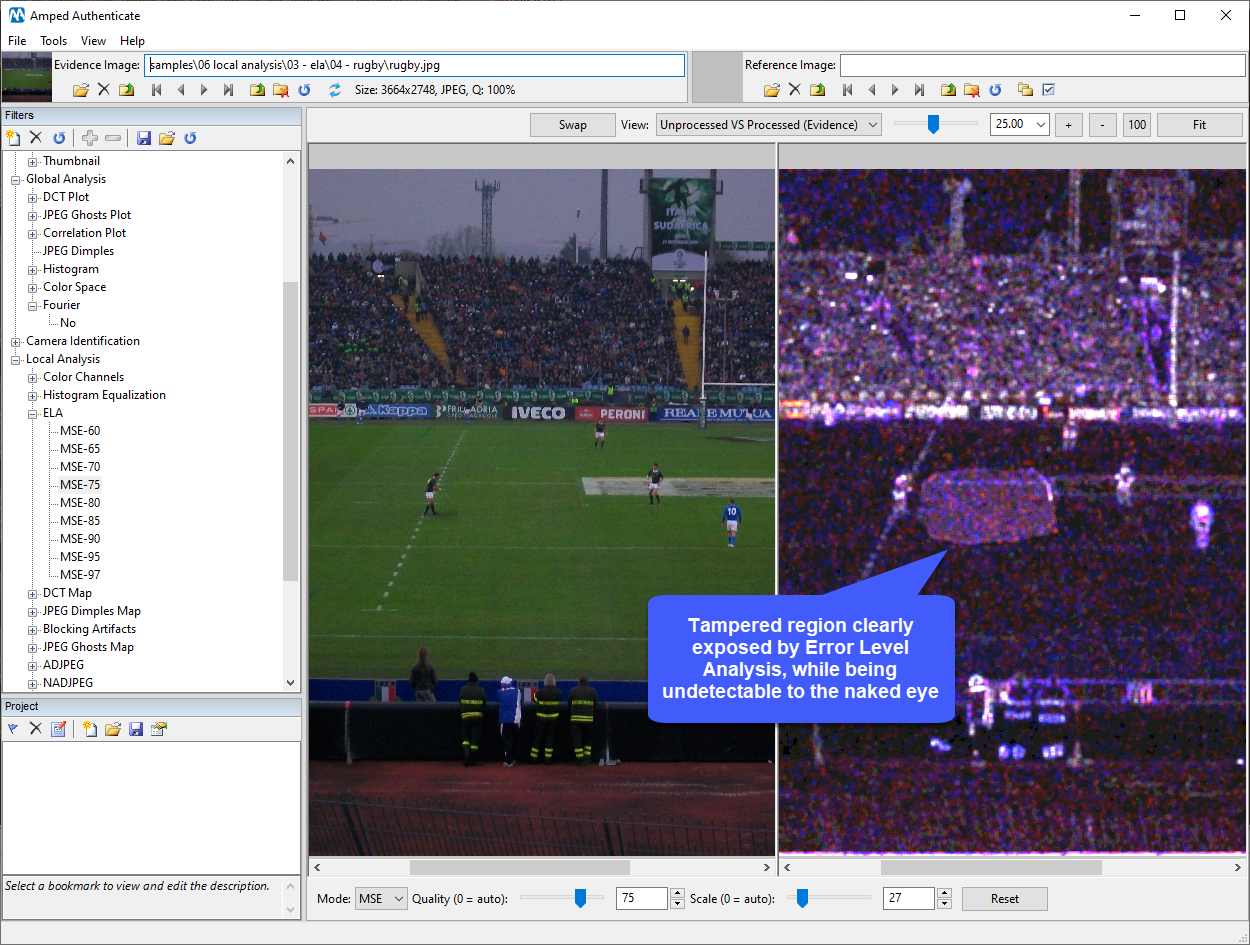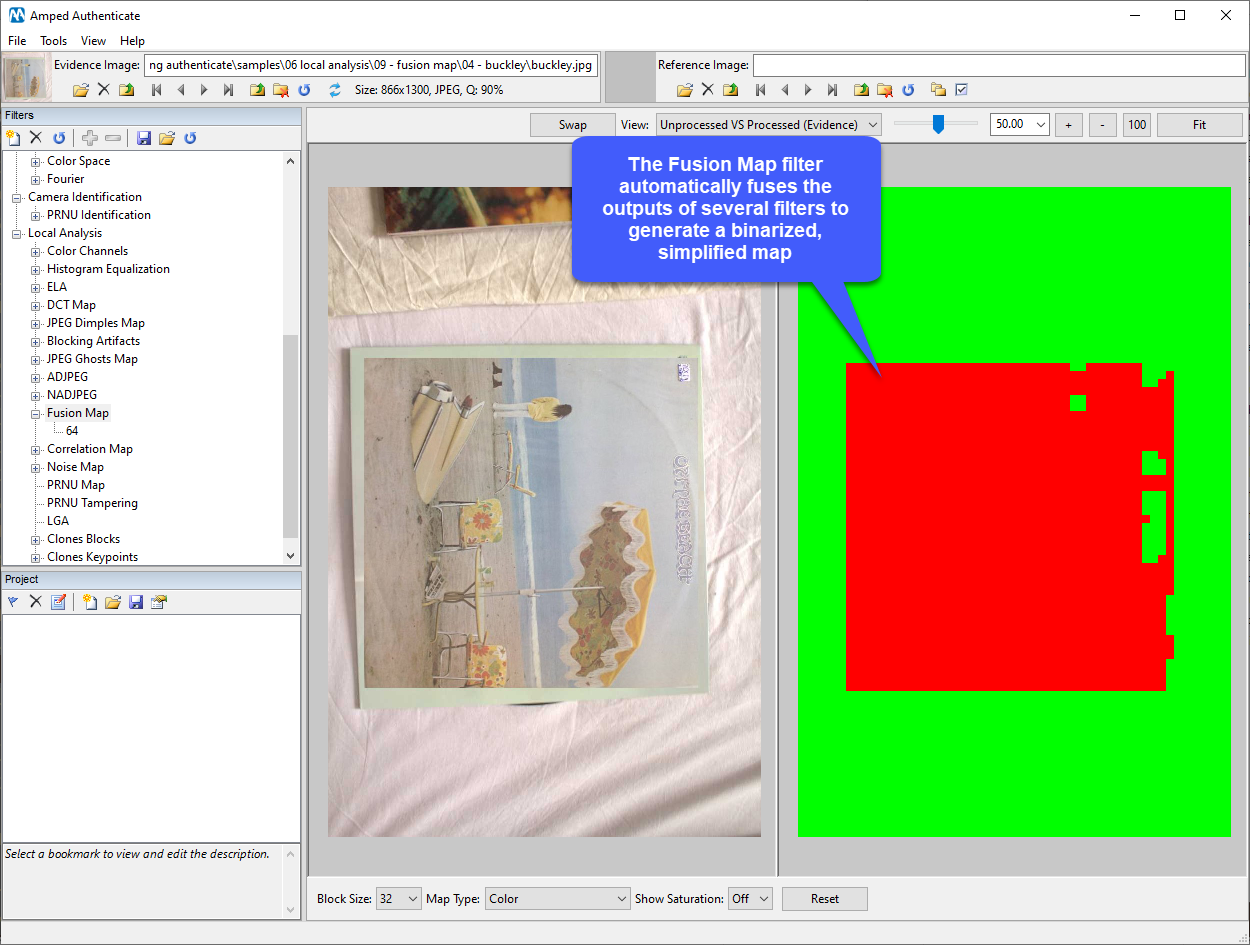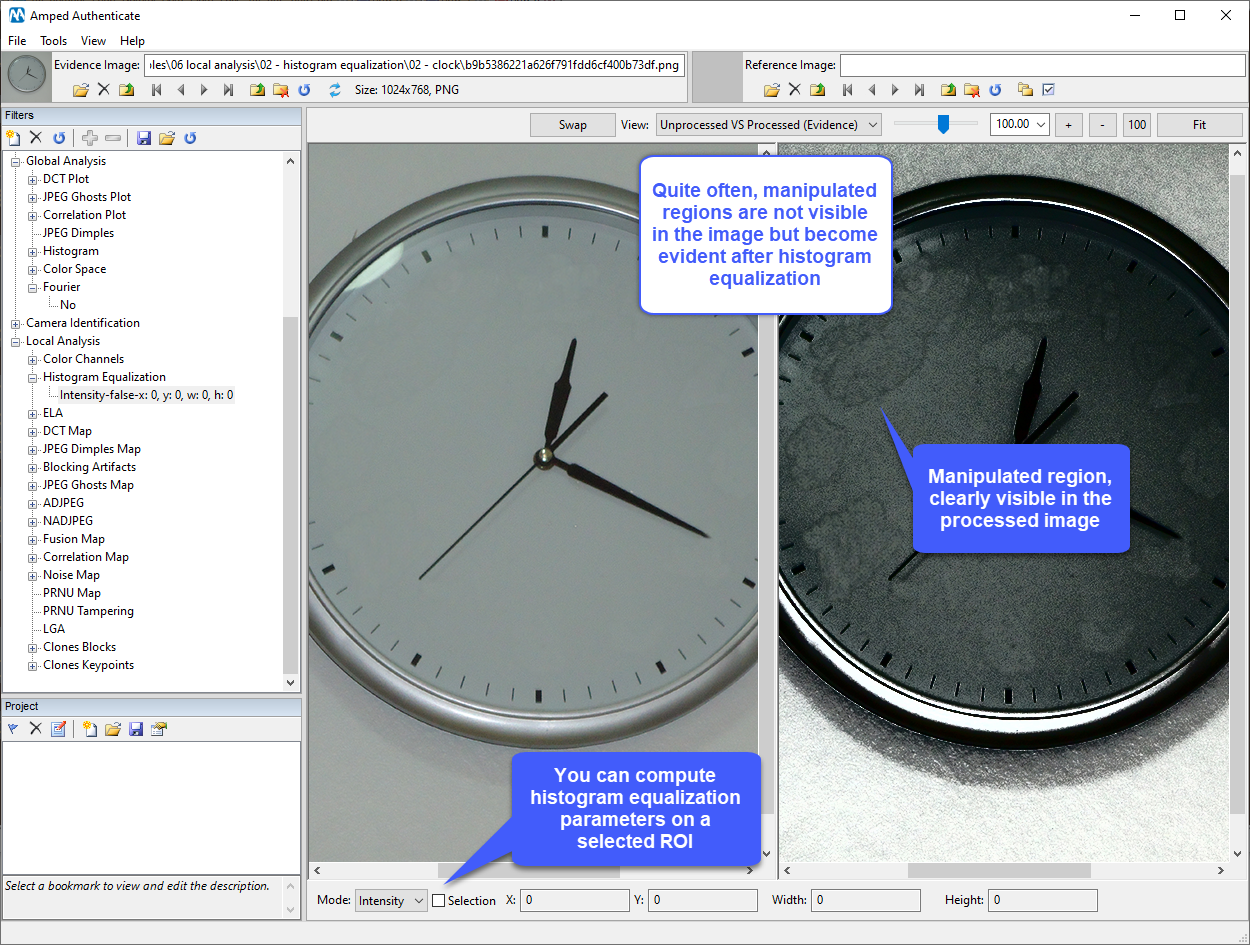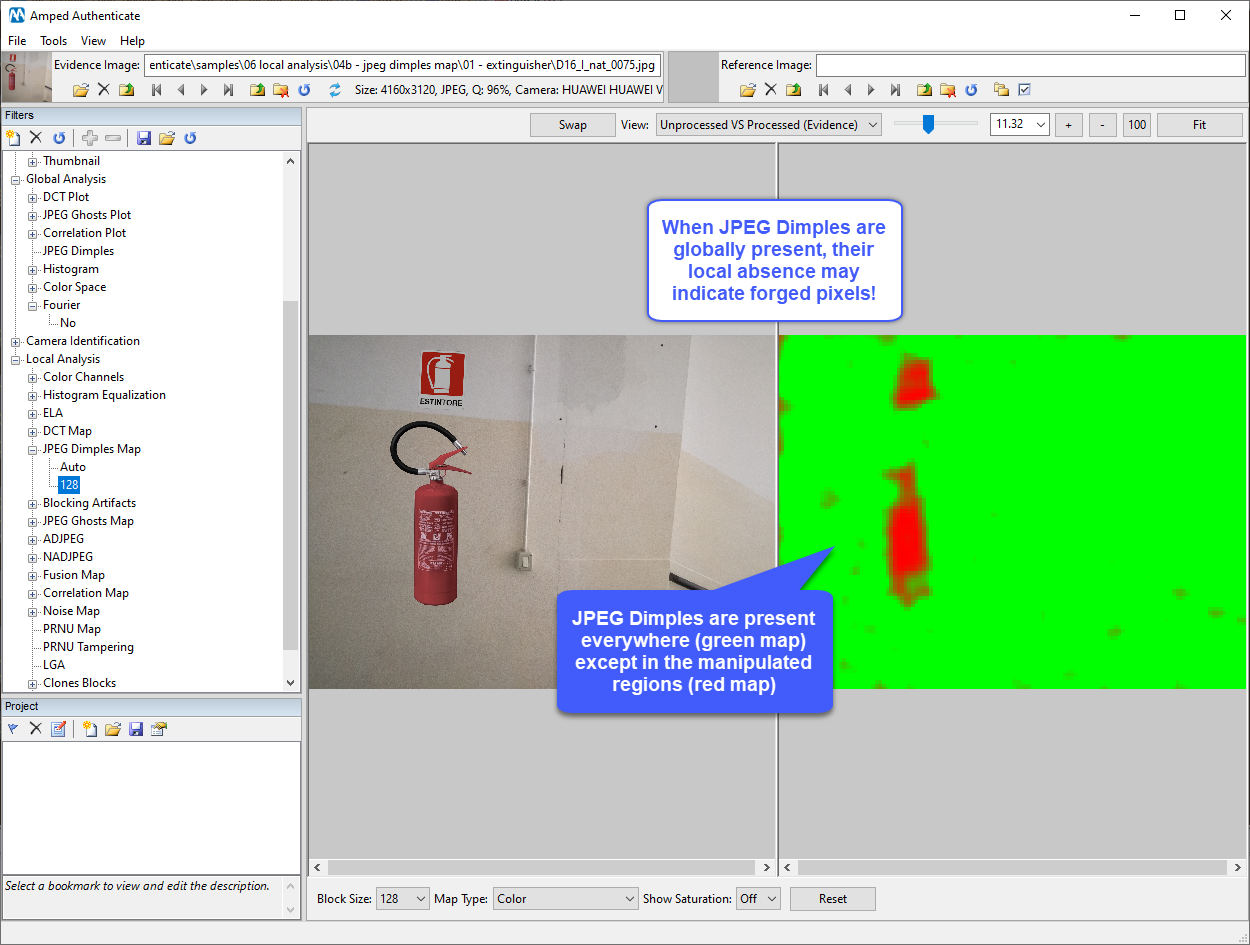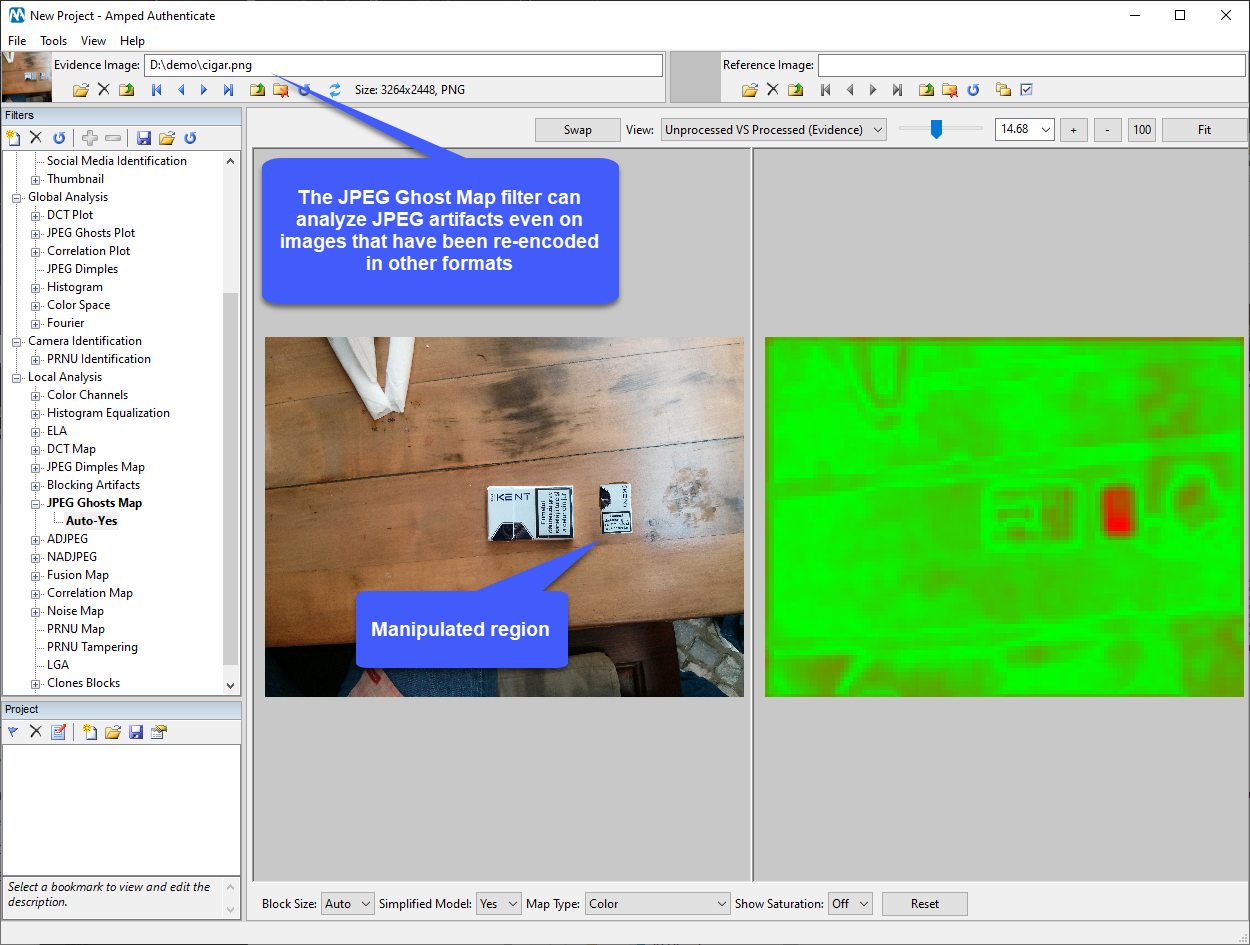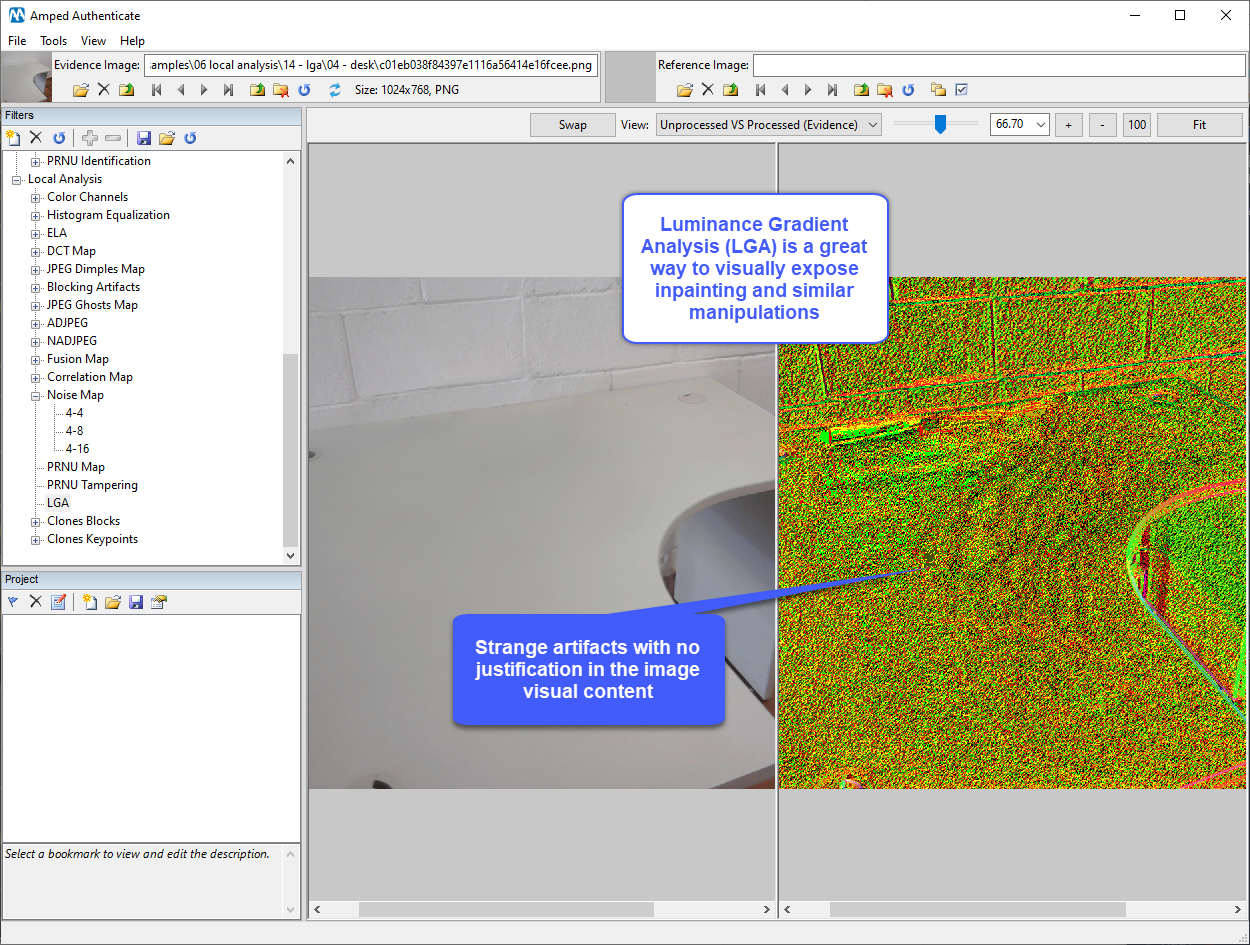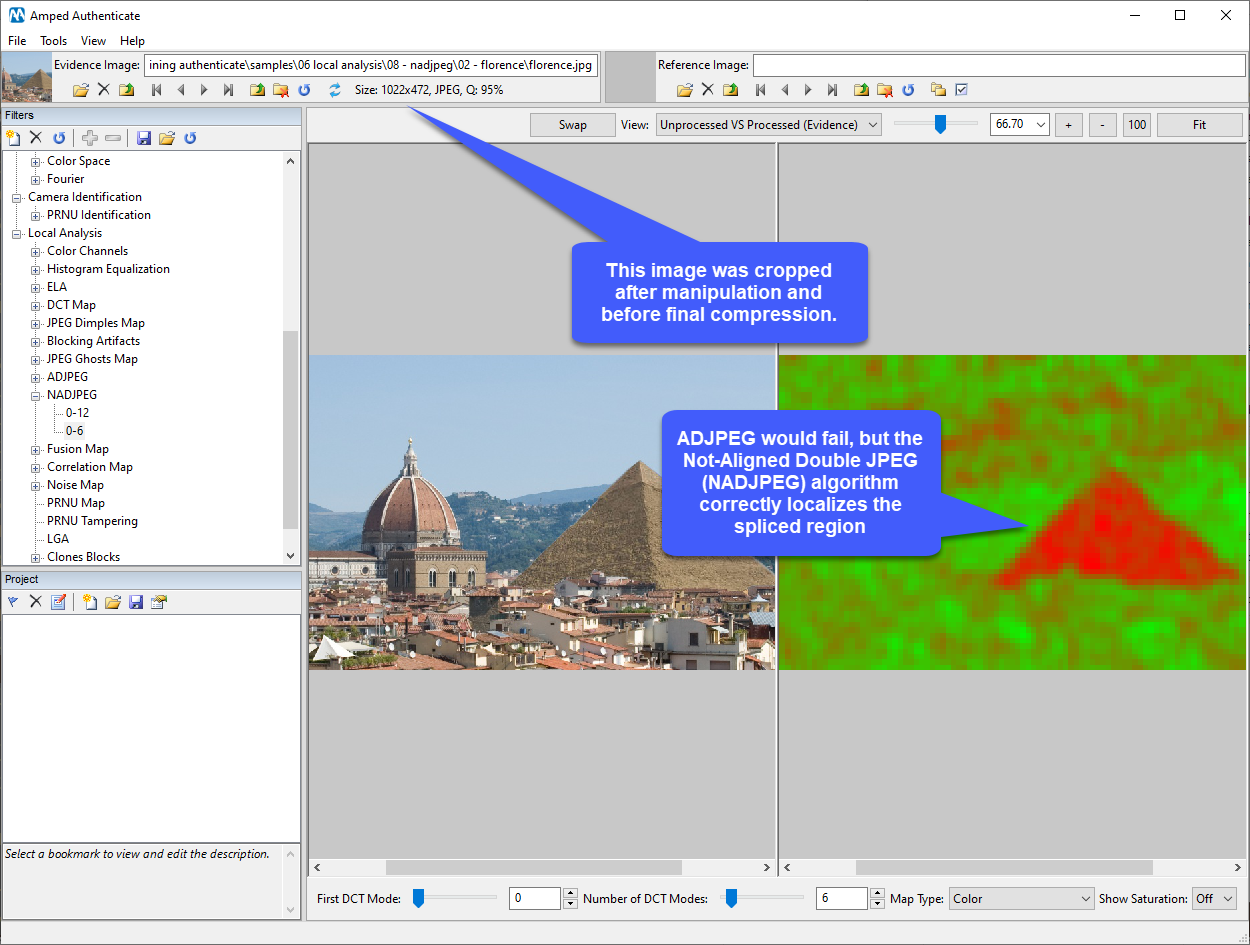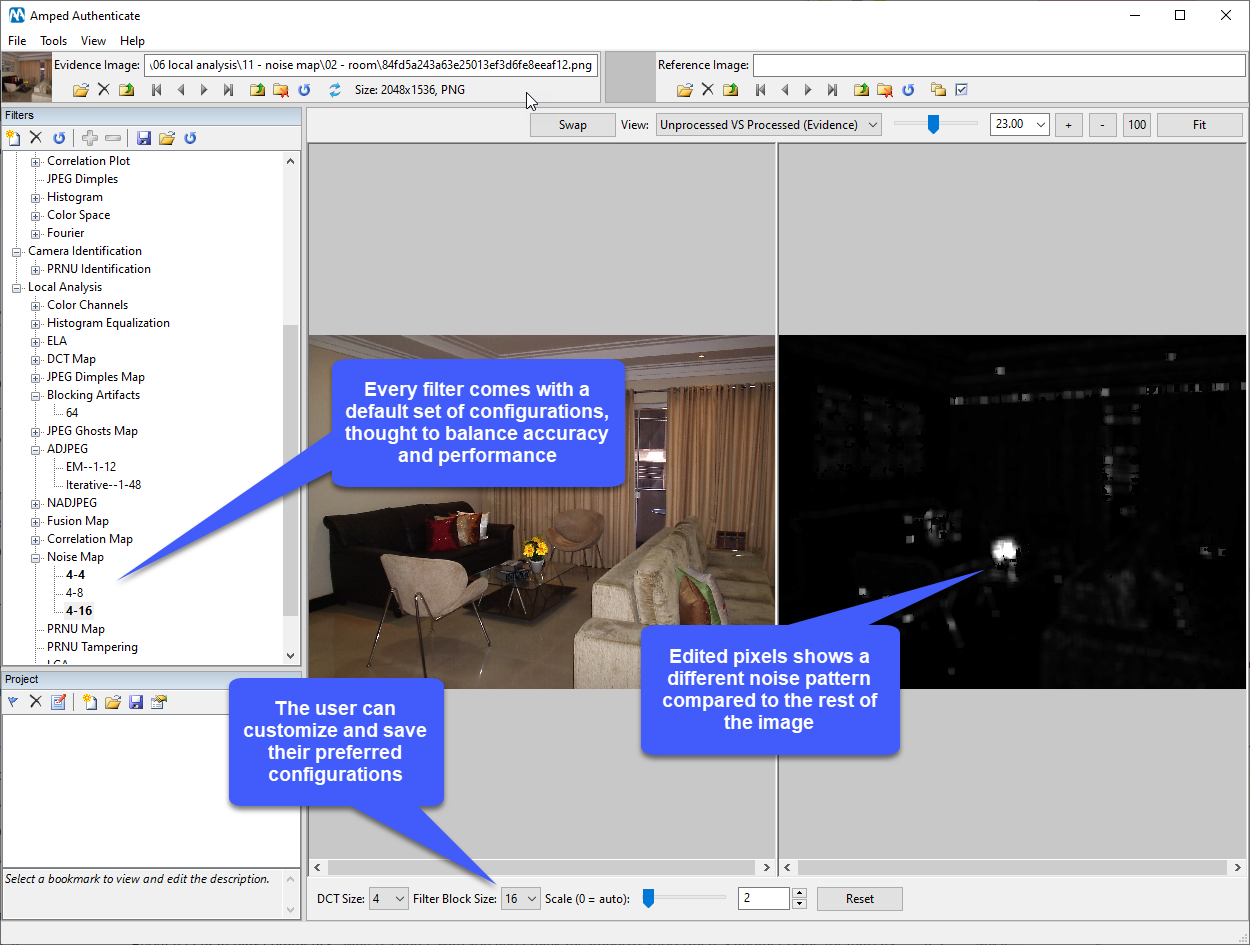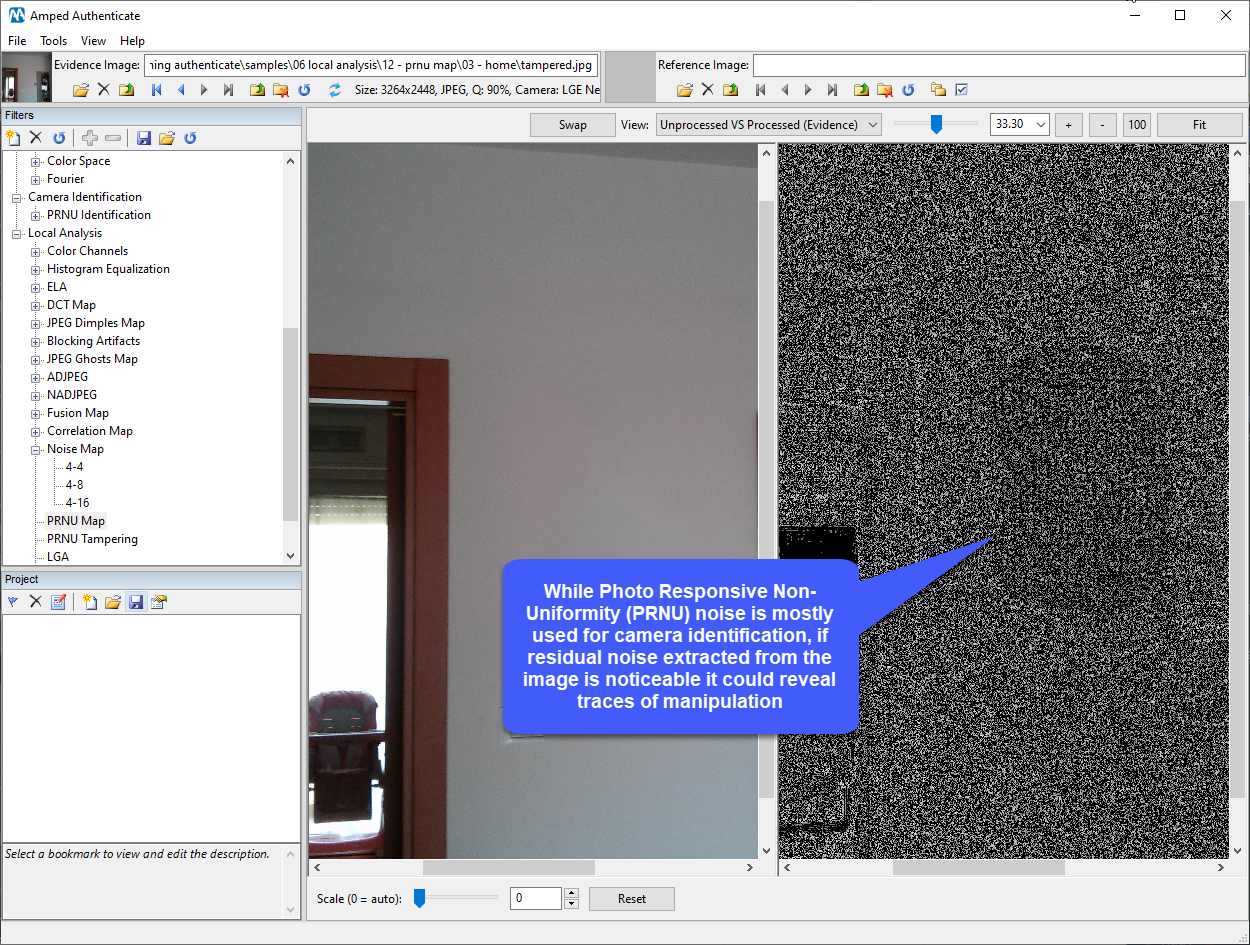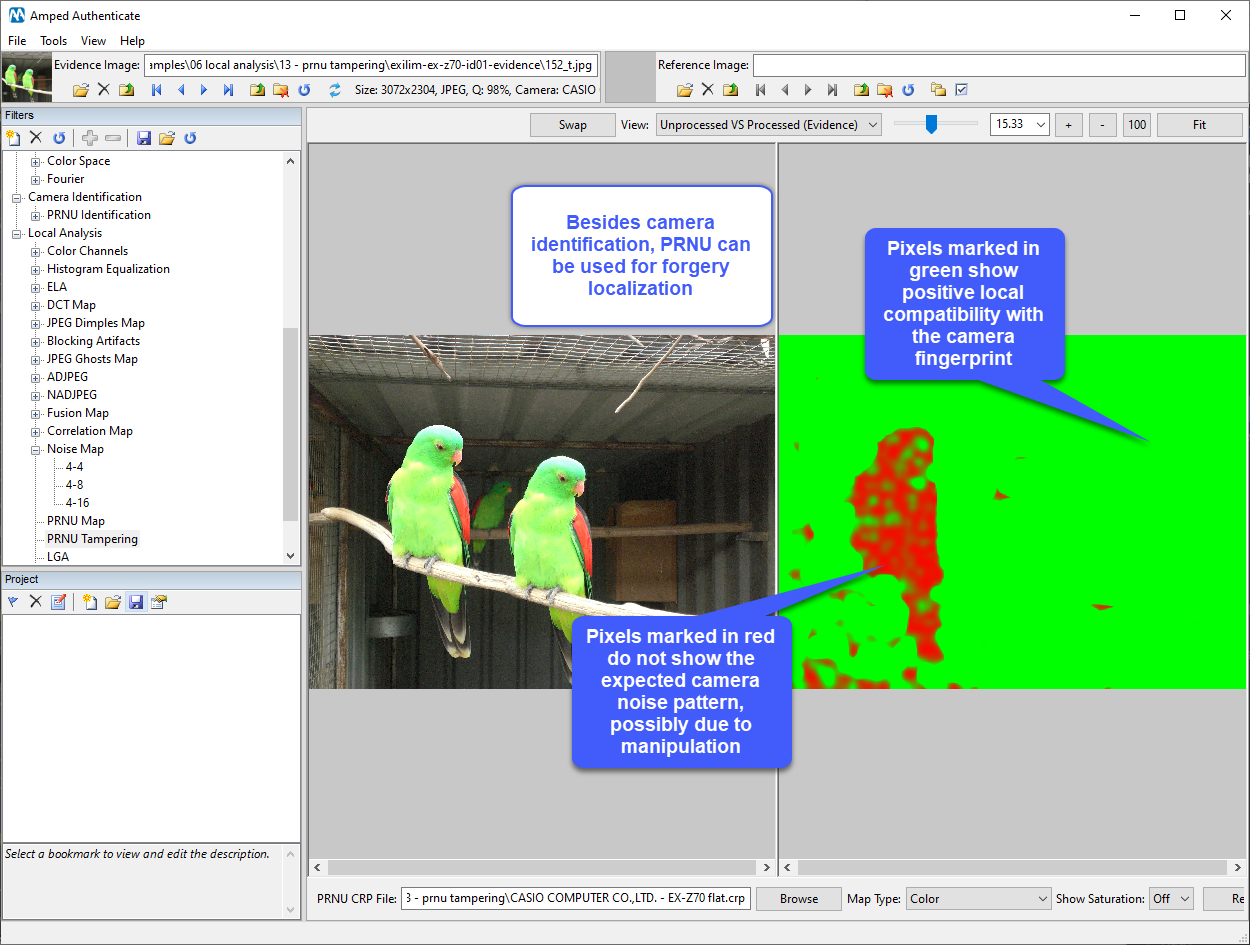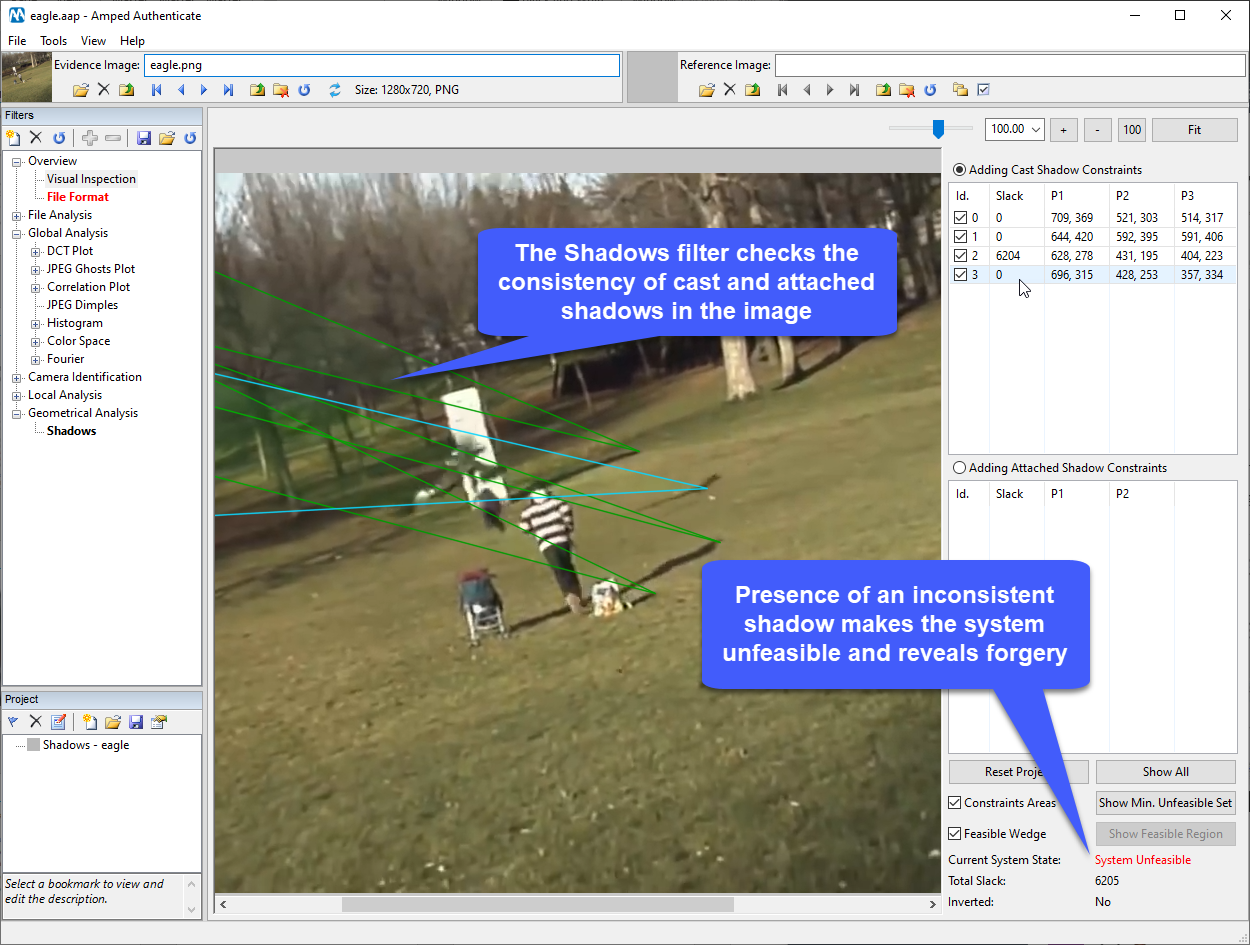Authenticate
Photo and video analysis and tampering detection
The complete software for unveiling the processing history of a digital image or video.
Verify the integrity of image and video files.
Identify the processing history of photos and videos.
Detect tampered areas to determine their authenticity.
Identify the device used to capture images and videos.
Photo and video analysis and tampering detection
Unveil the processing history of a digital image and video
Forensically sound
Courtroom admissible
Produce a customizable forensic report ensuring that your results are well explained and reproducible. Without solid ways to validate that the information is accurate, digital images and videos could pose issues when they are presented as evidence in a case and in court. Therefore, thoroughly investigating an image and ensuring its trustworthiness and source is critical in today’s investigations.
Validated
For every filter in Amped Authenticate, you’ll find bibliographic references in the user manual and, whenever the filter is used, in the generated report. Authenticate contains image and video authentication filters based on tens of scientific papers and studies. When we implement a filter we carry out an experimental validation to check the performance reported in the literature are matched.
Image and video authentication
Amped Authenticate helps video analysts answer the many challenges of authenticity and integrity surrounding today's digital images and videos.
Features
Used By
It is used by digital forensic experts and intelligence agencies worldwide.
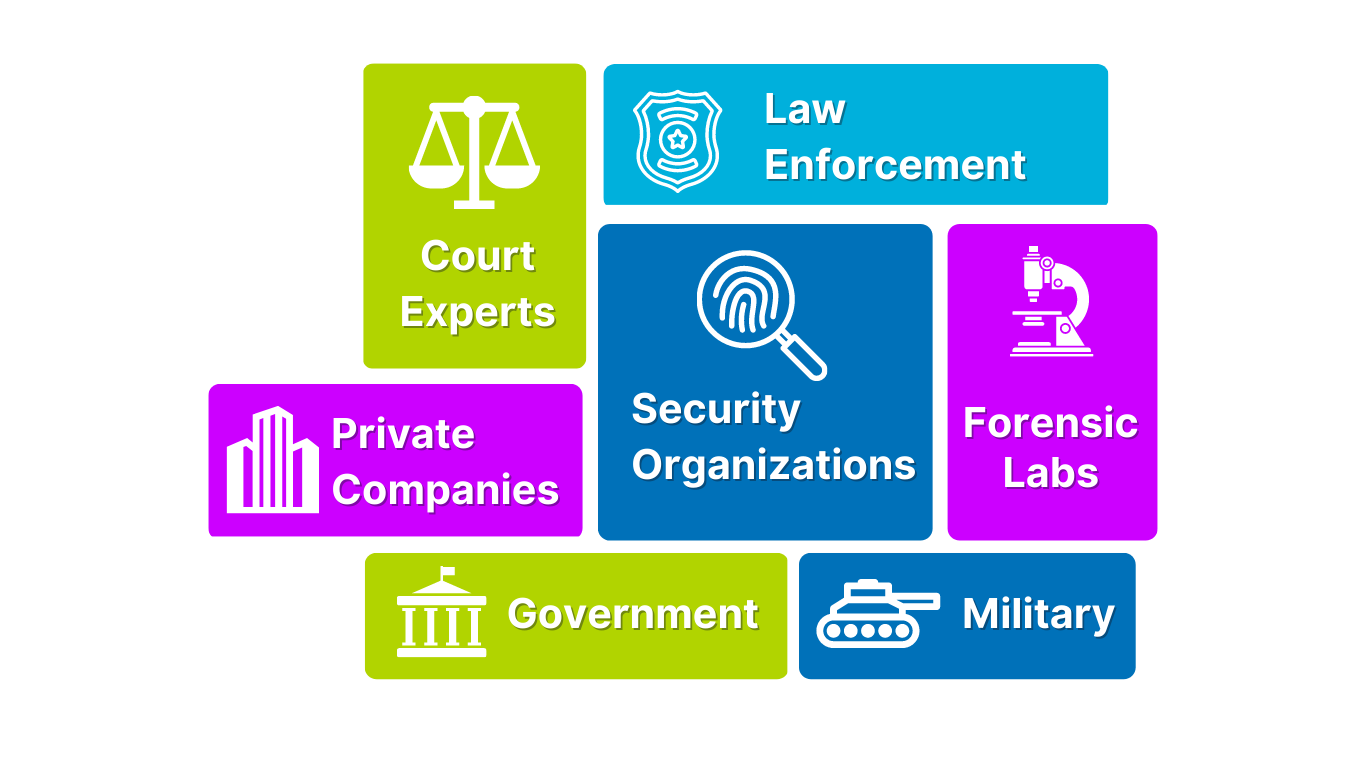
The Face GAN Deepfake filter in Amped Authenticate
Analyze images and videos
The Face GAN Deepfake filter first localizes faces within the image and then uses AI to classify each face and provide you with a label and a confidence score between 0 and 1. When the confidence score is above 0.8, the label can either be Real (green color) or Fake (red color).
When the score is lower, Authenticate will play it safer and write Uncertain Real or Uncertain Fake.
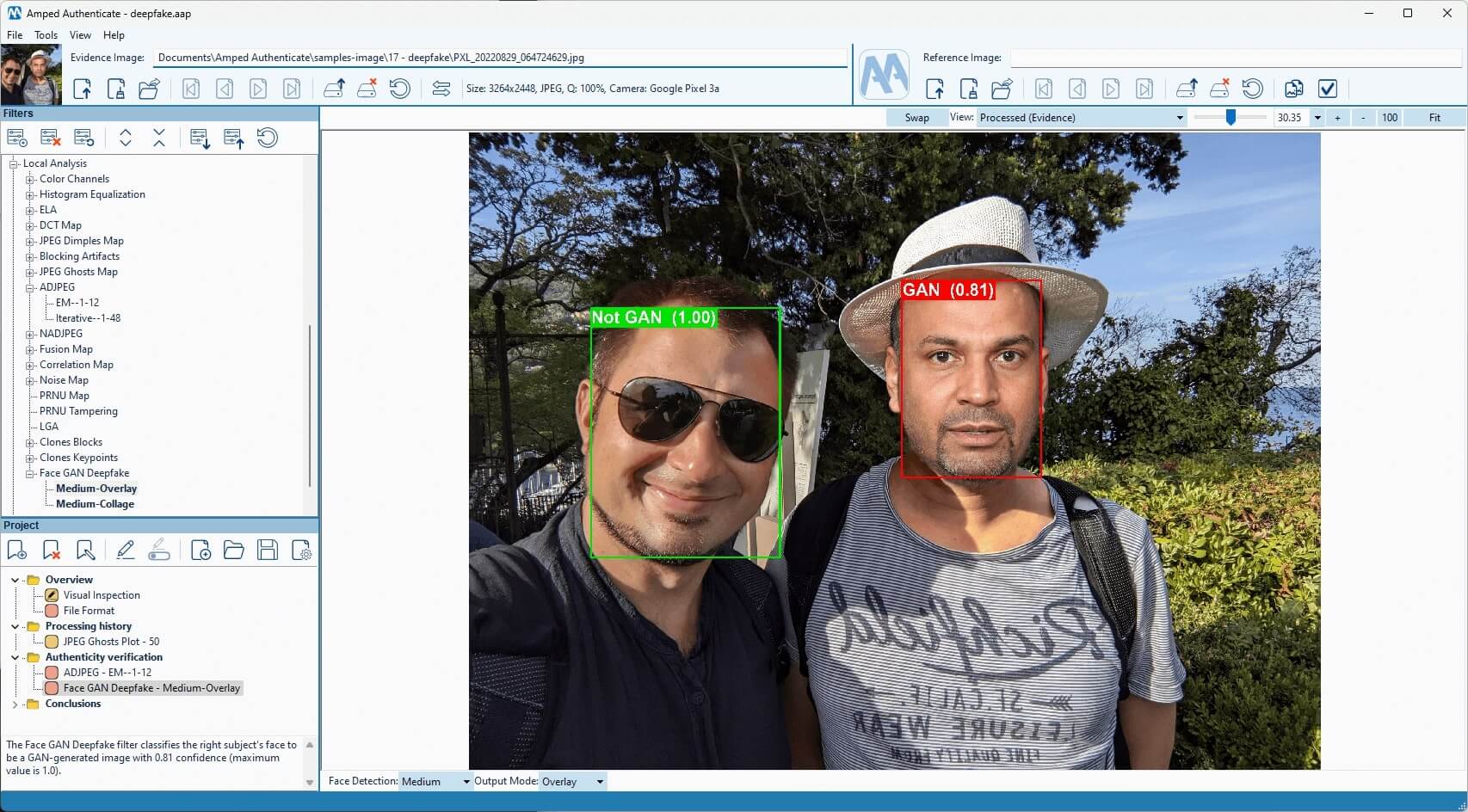
Amped Ultimate
Team subscription
For teams of four or more forensic video analysts
Subscription for one year including:
- 1 seat of Amped FIVE
- 1 seat of Amped Authenticate
- 1 seat of Amped DVRConv
- 5 seats of Amped Replay
From our
